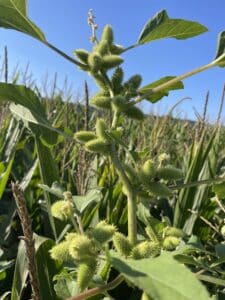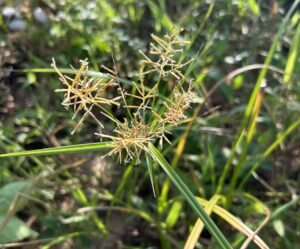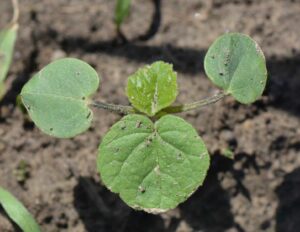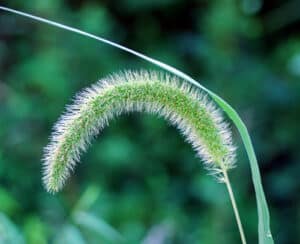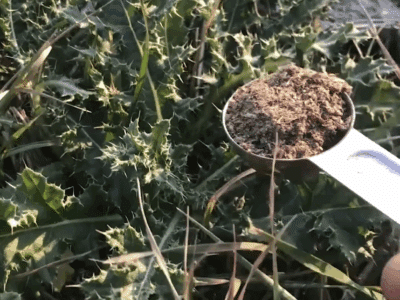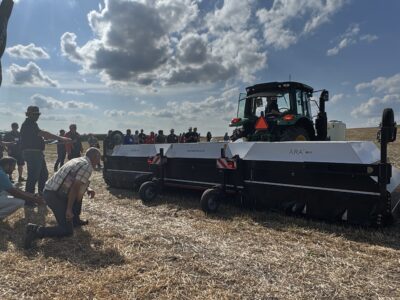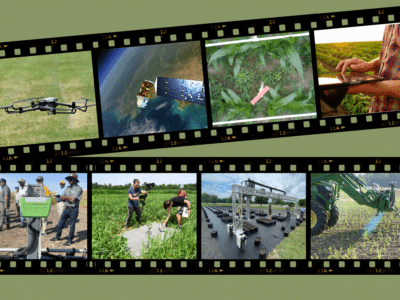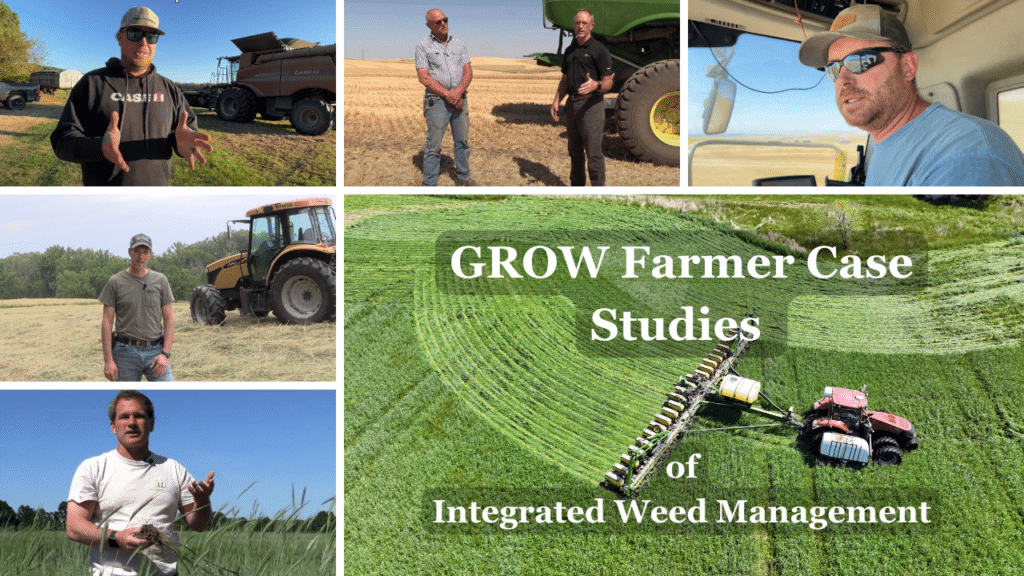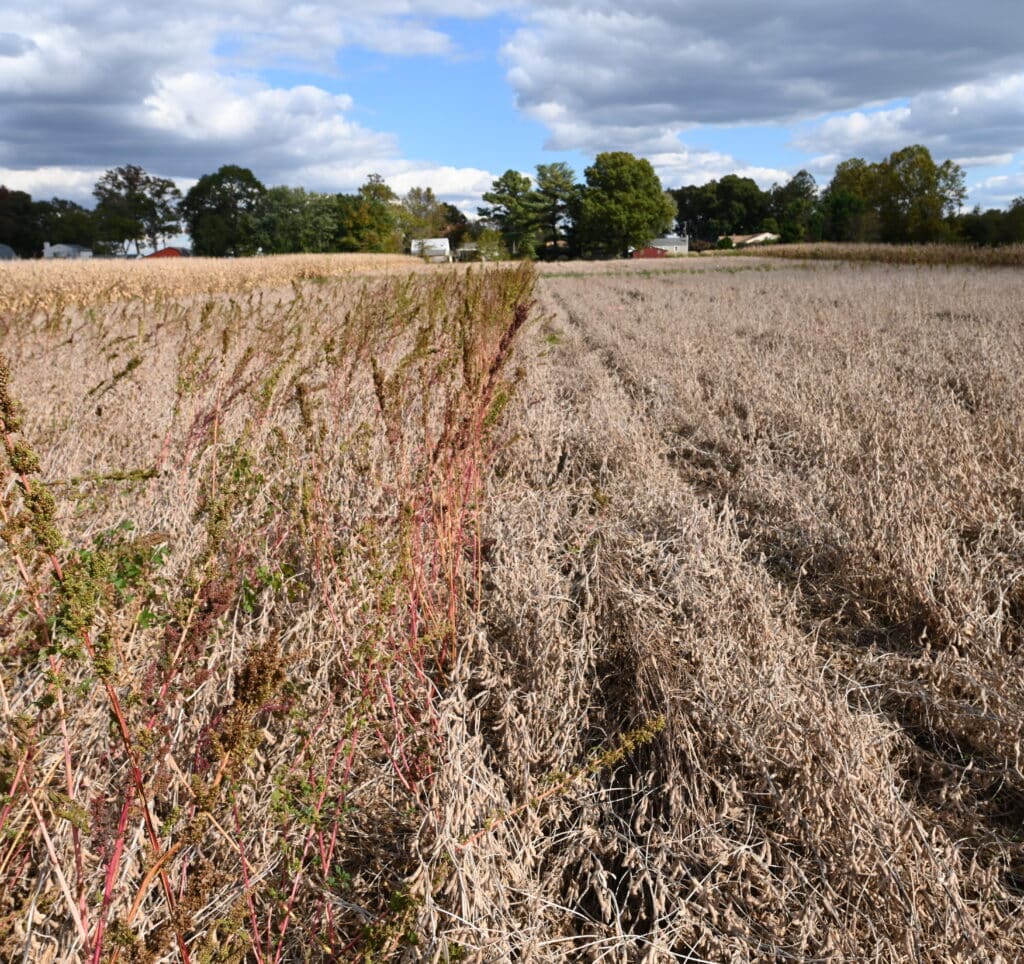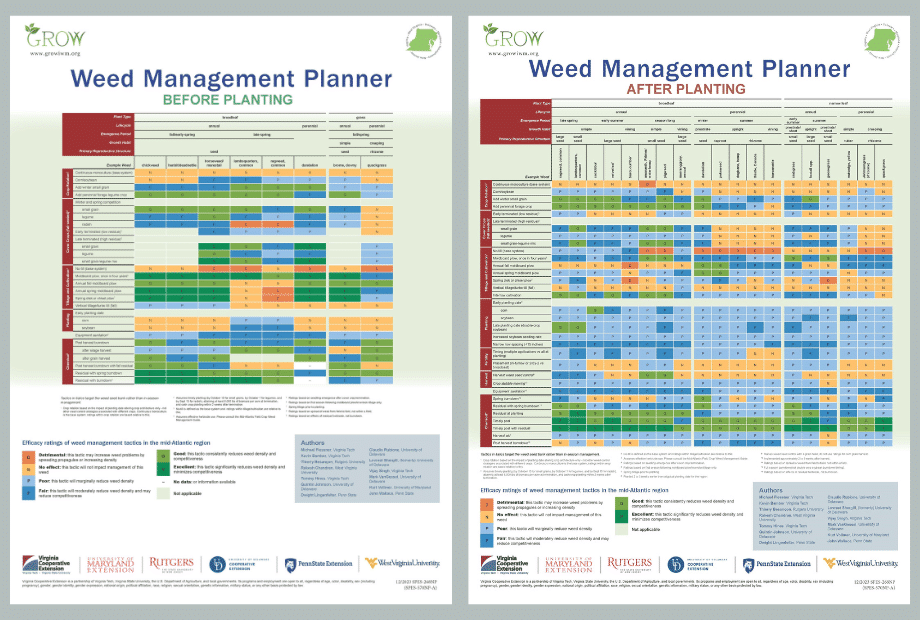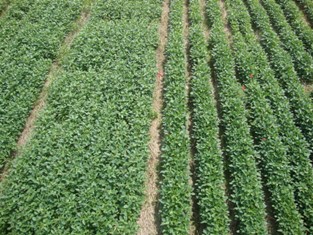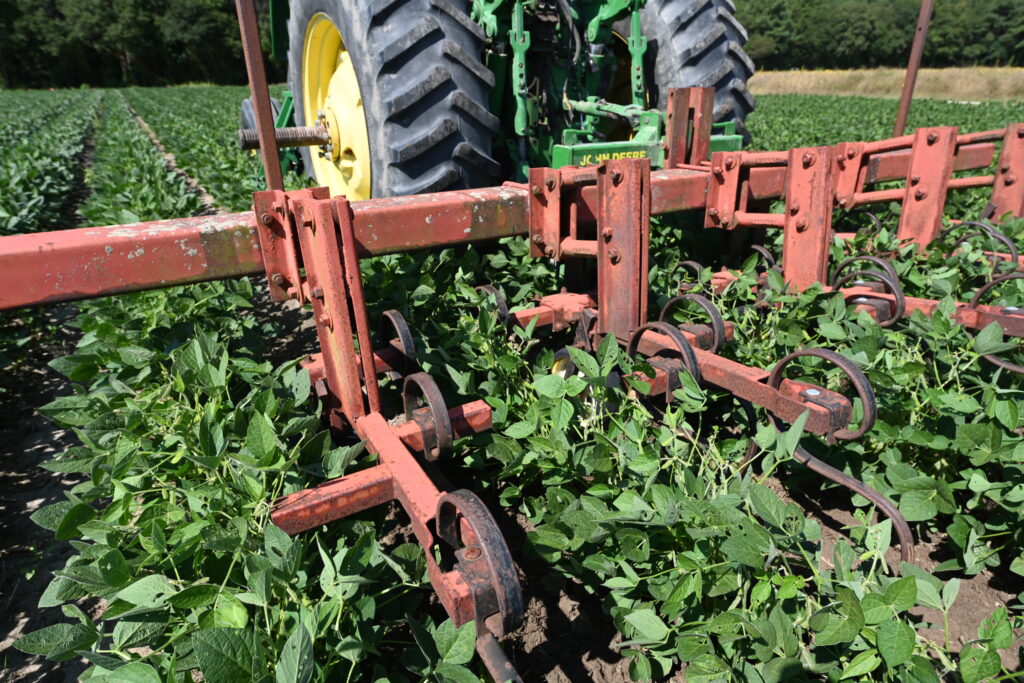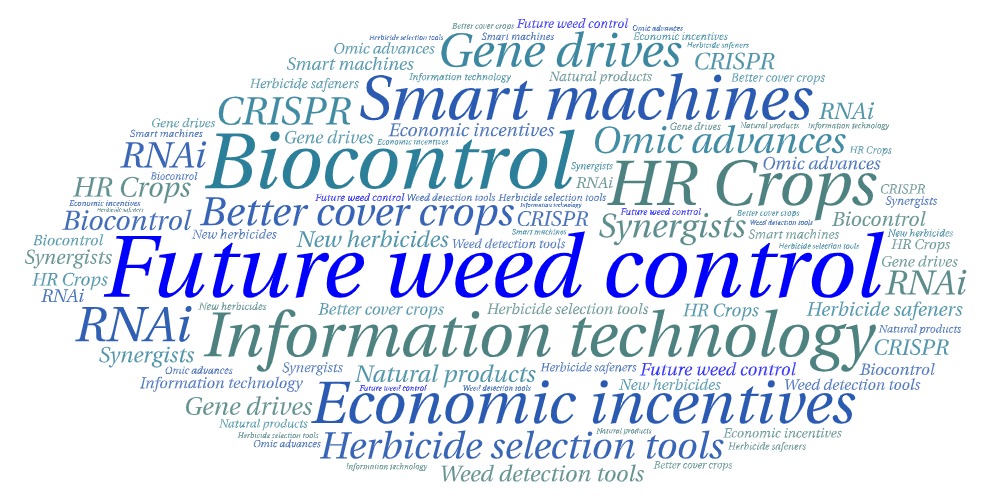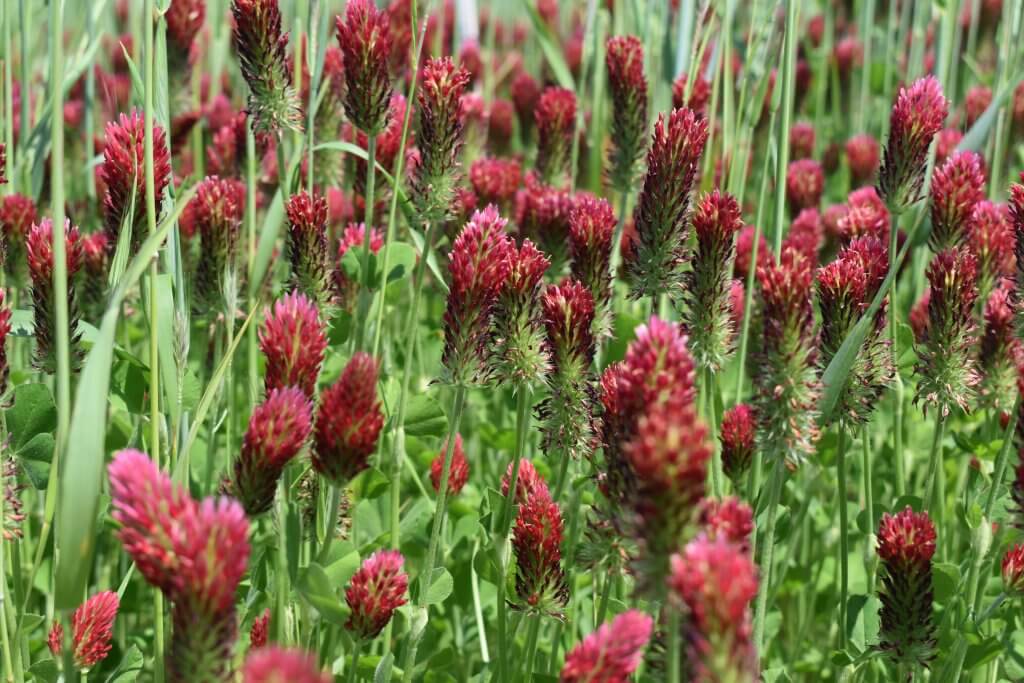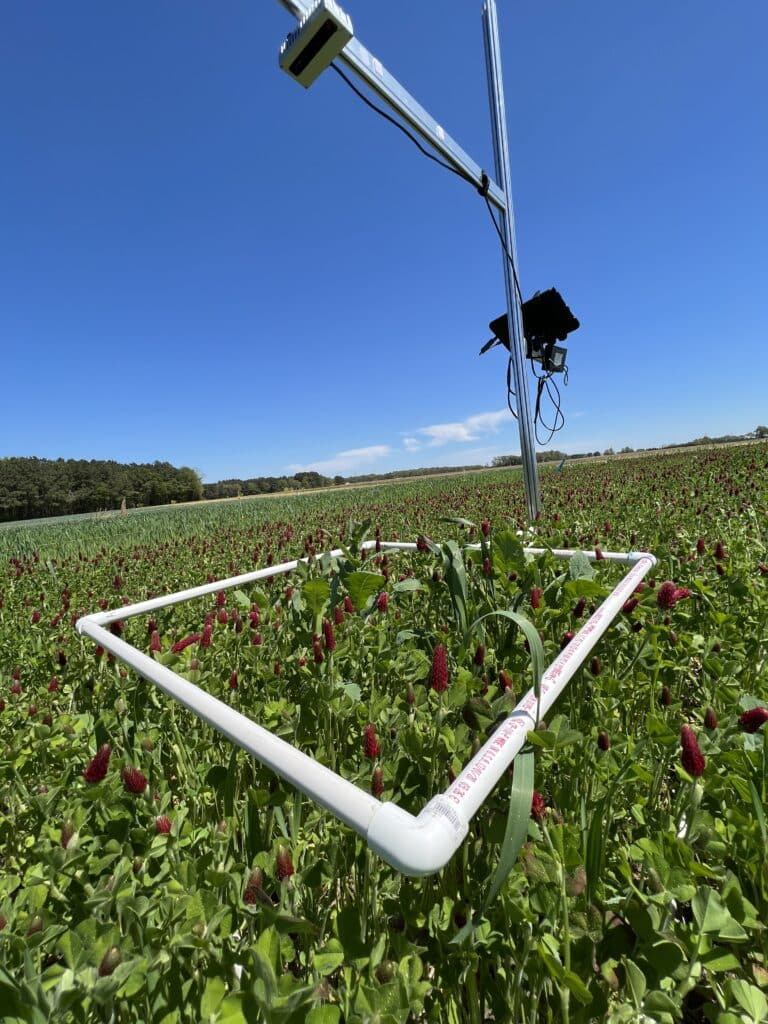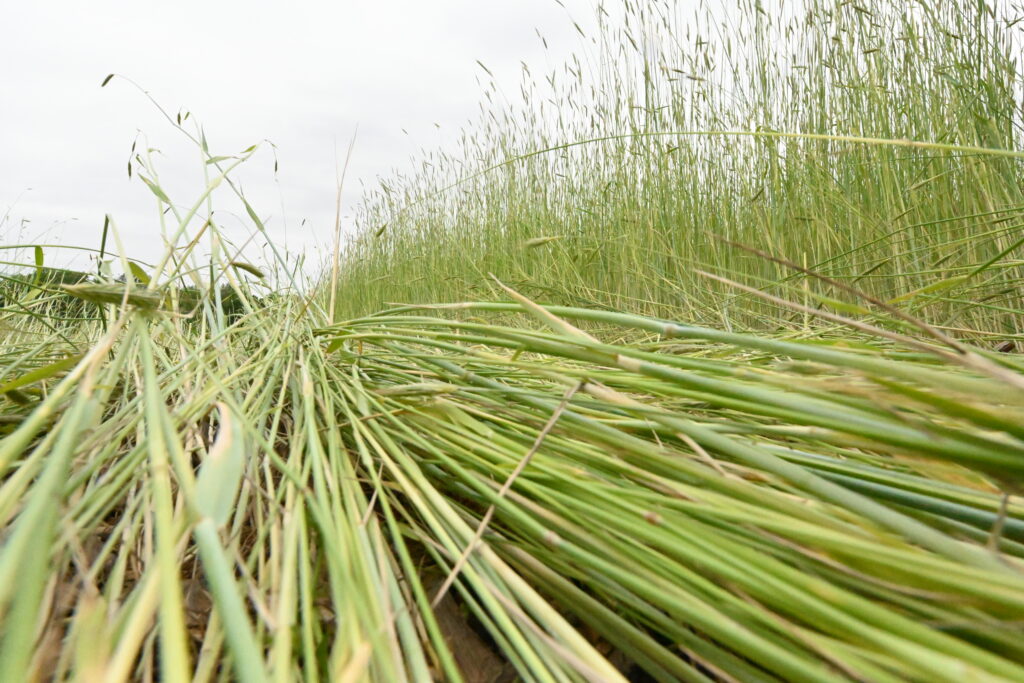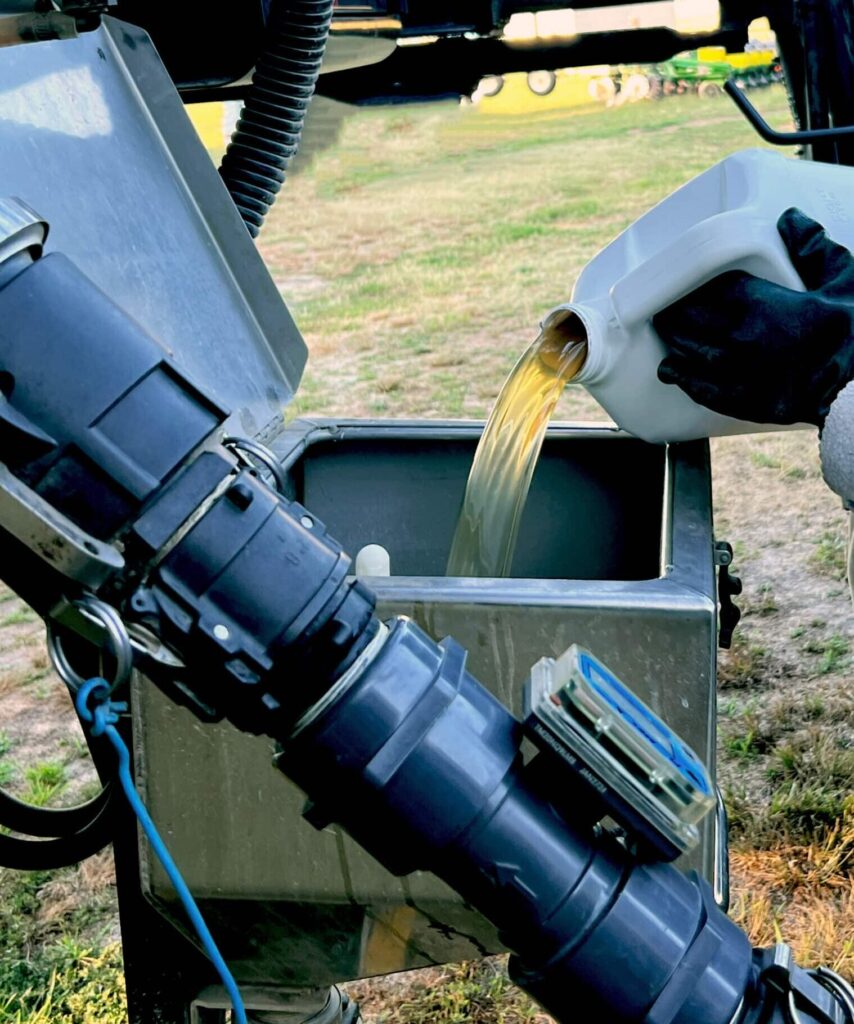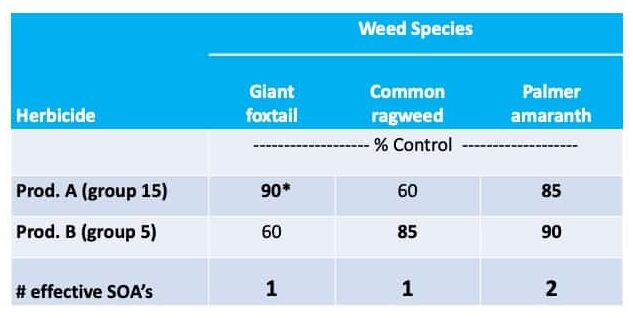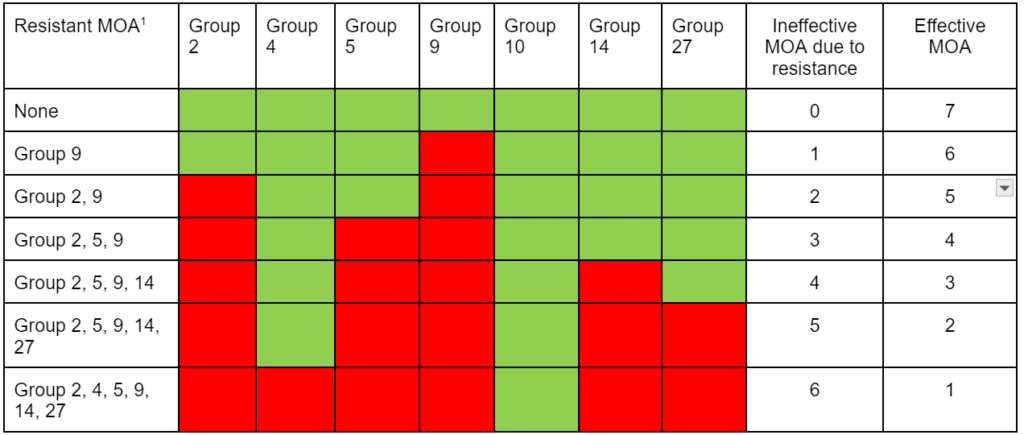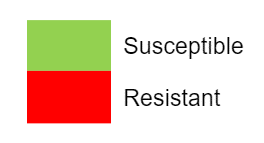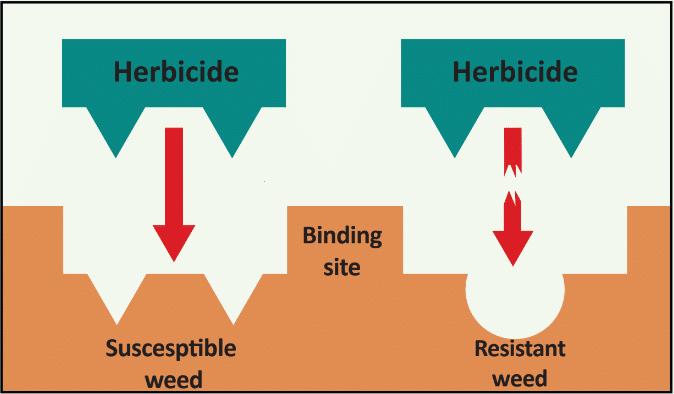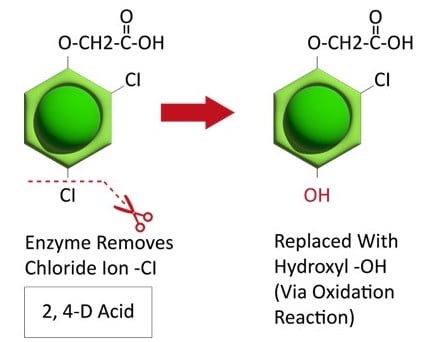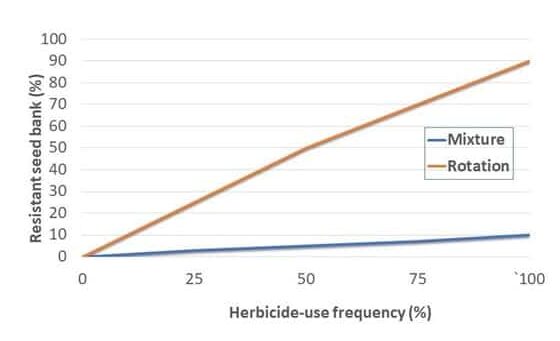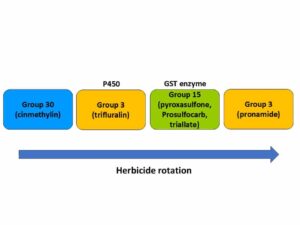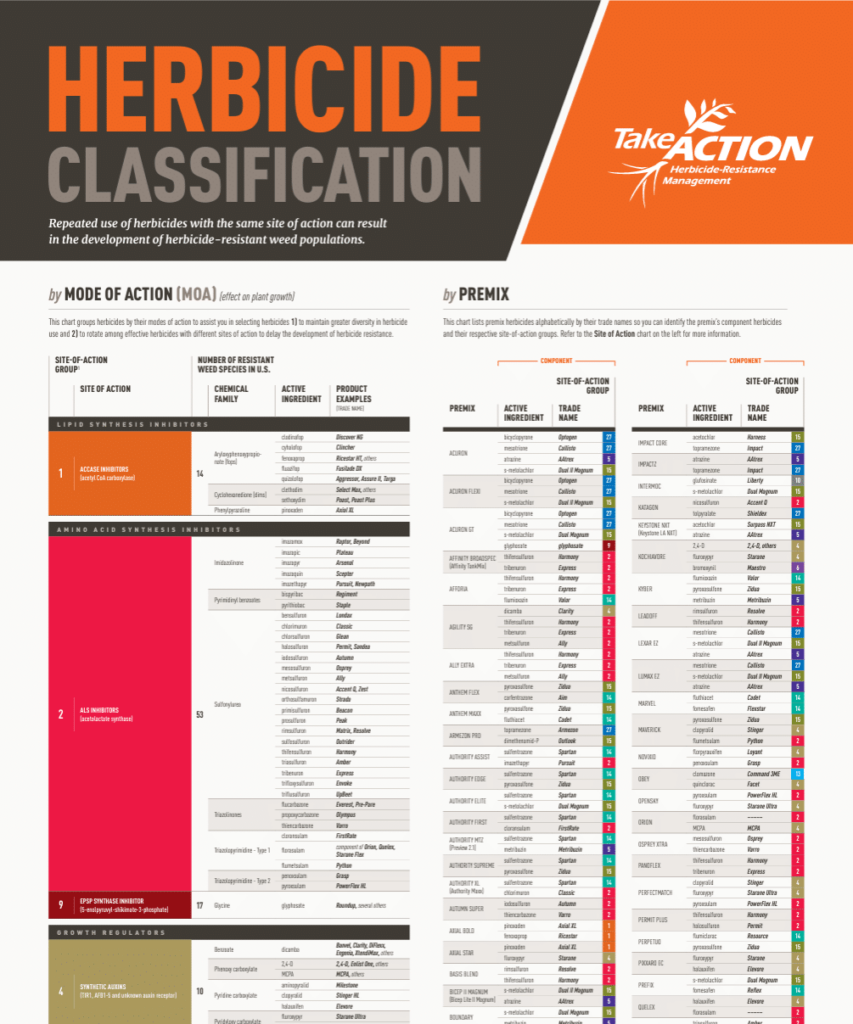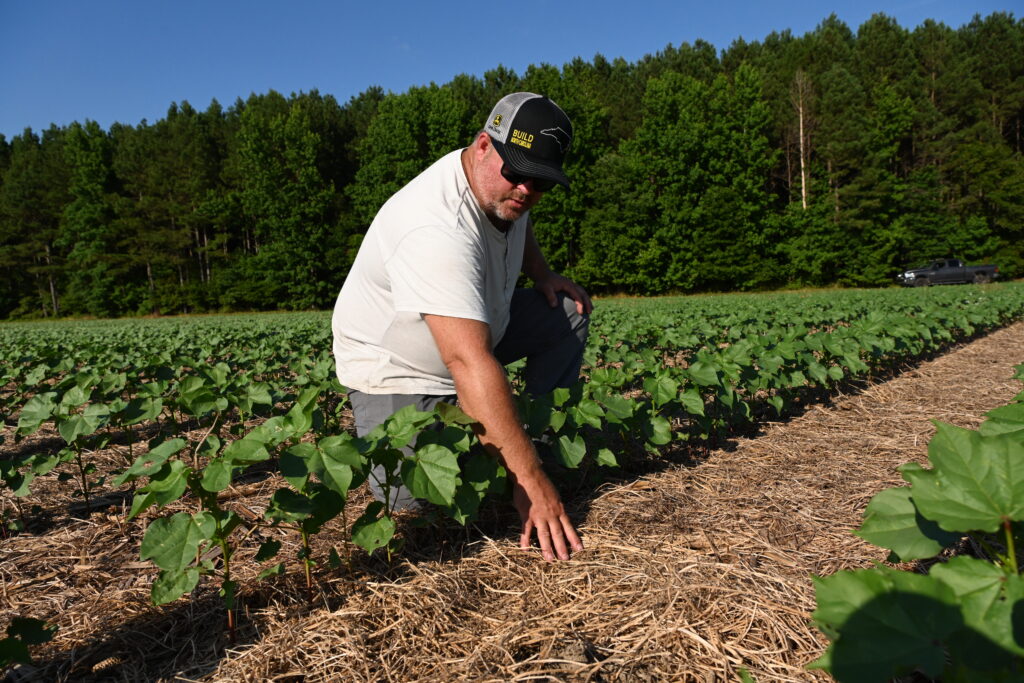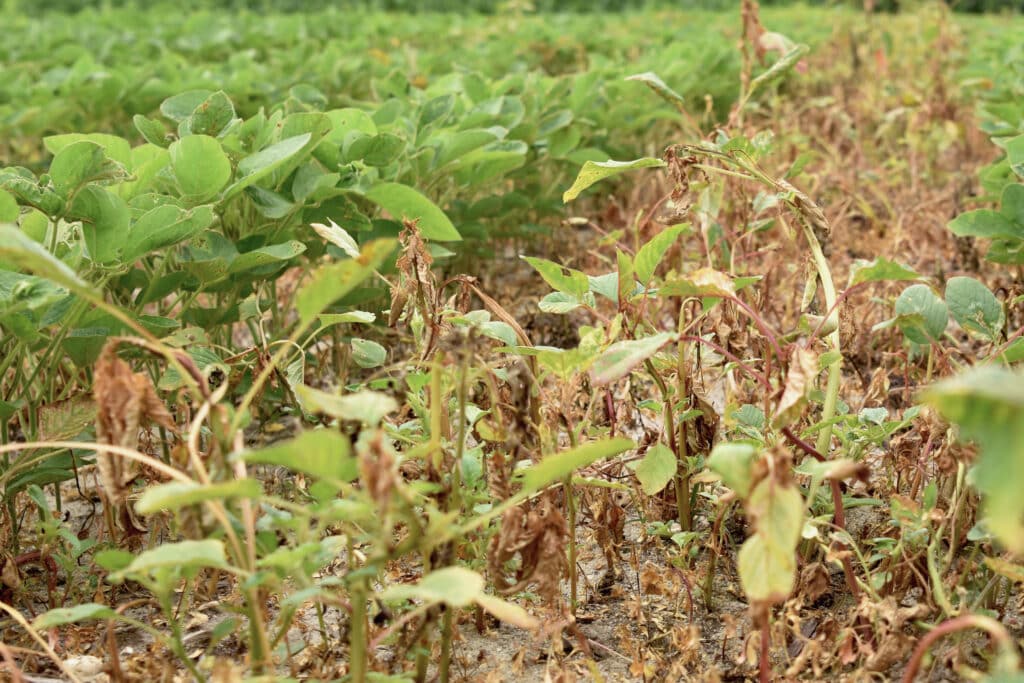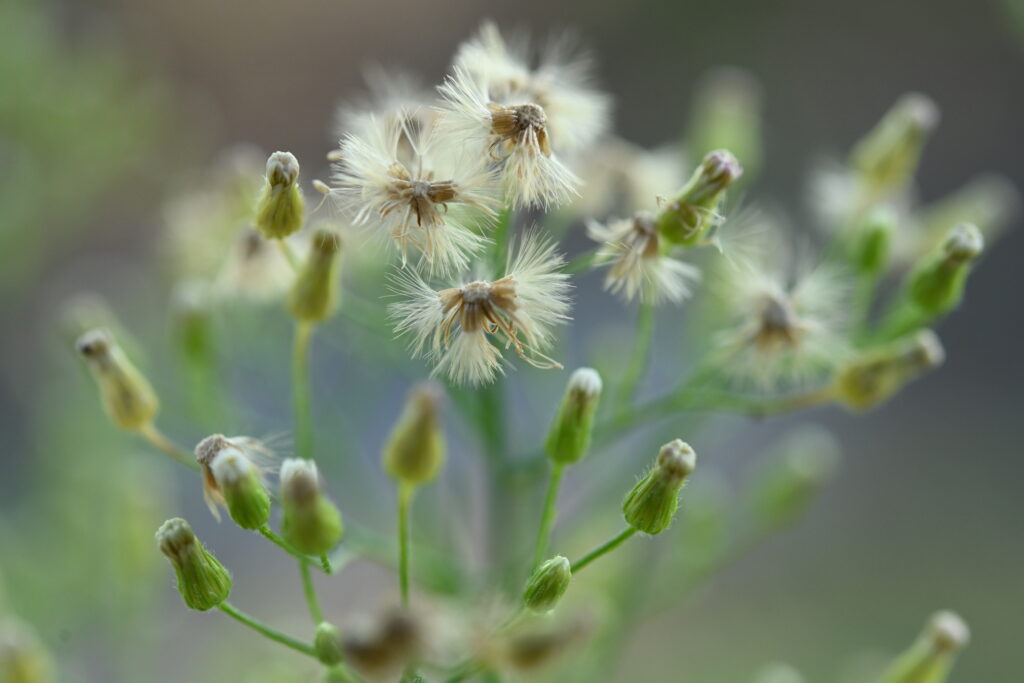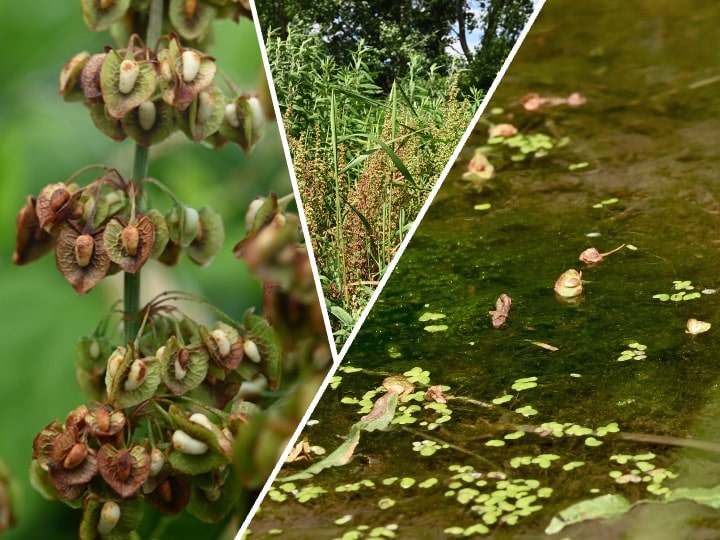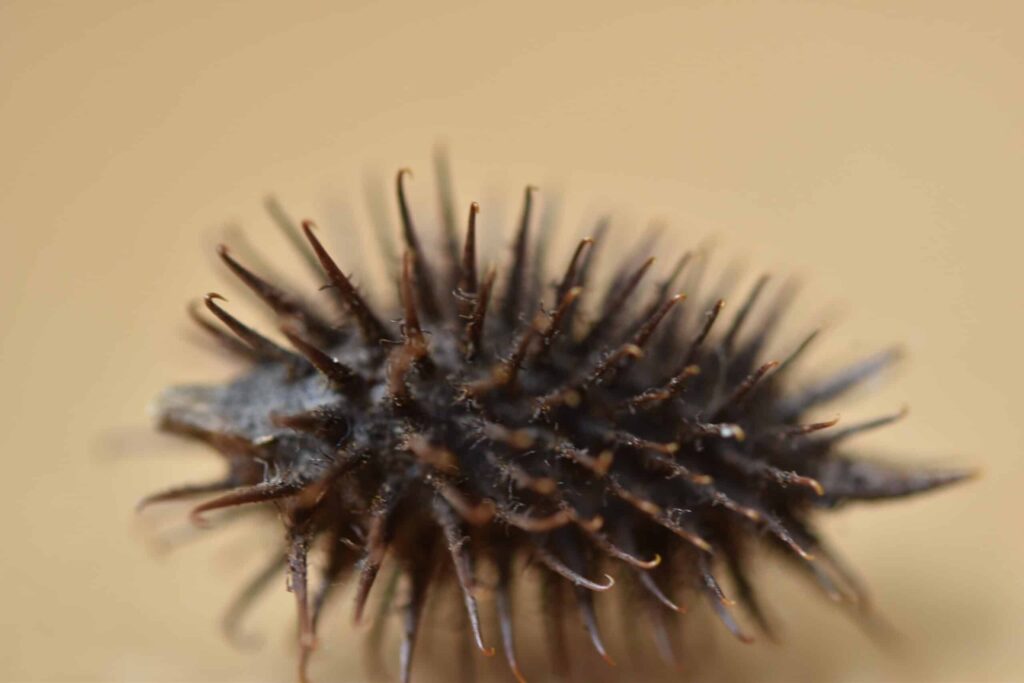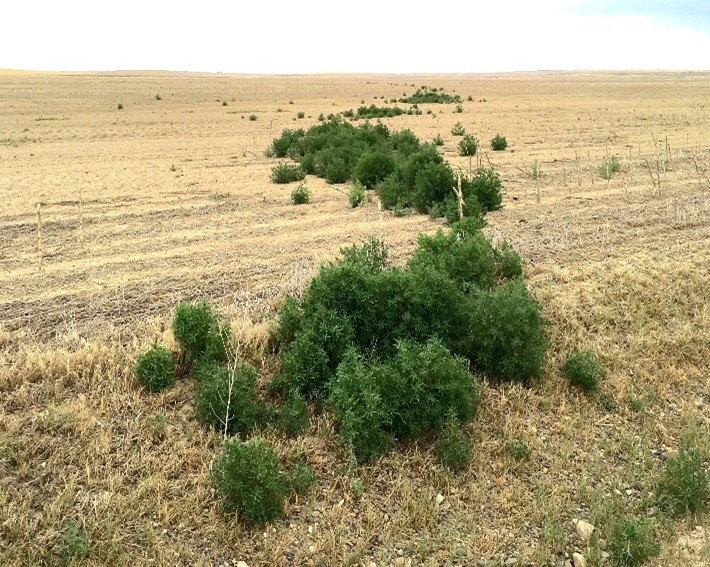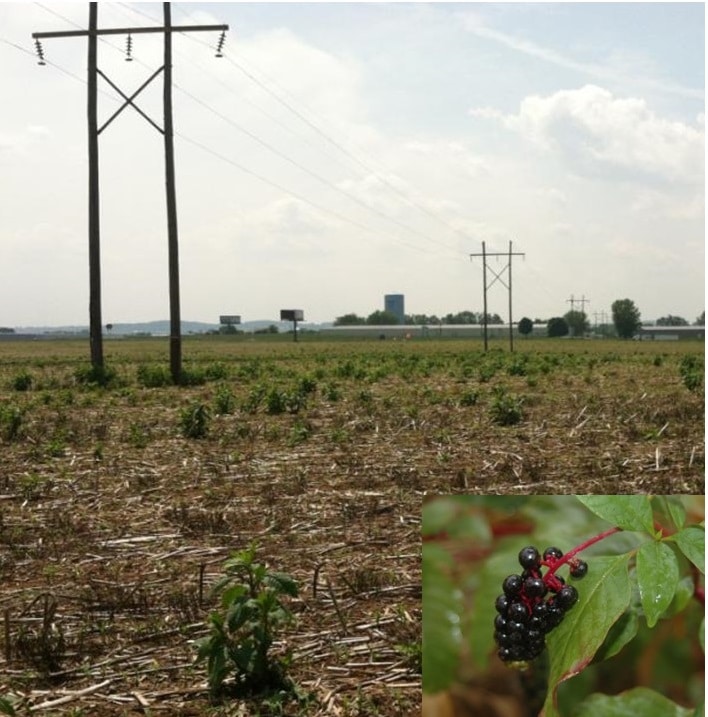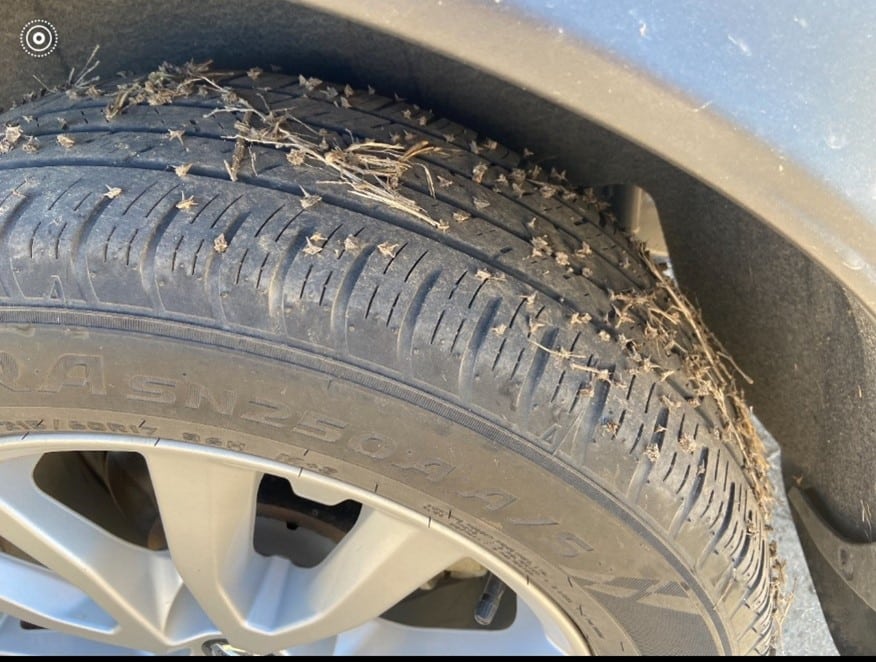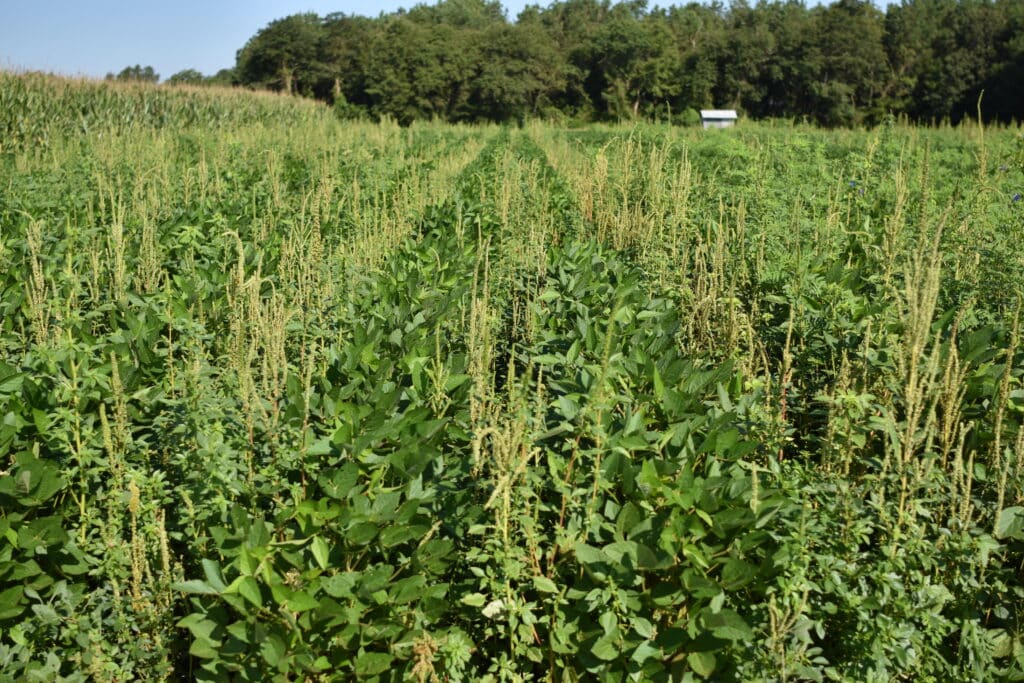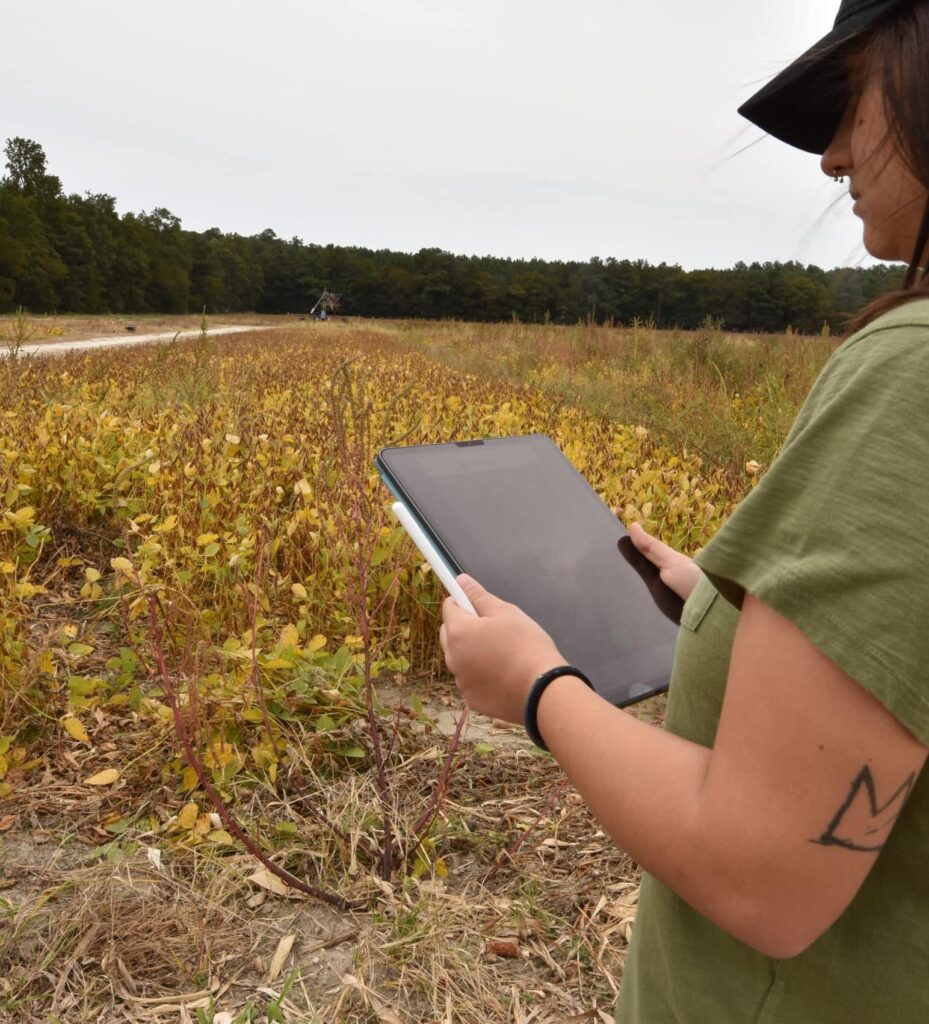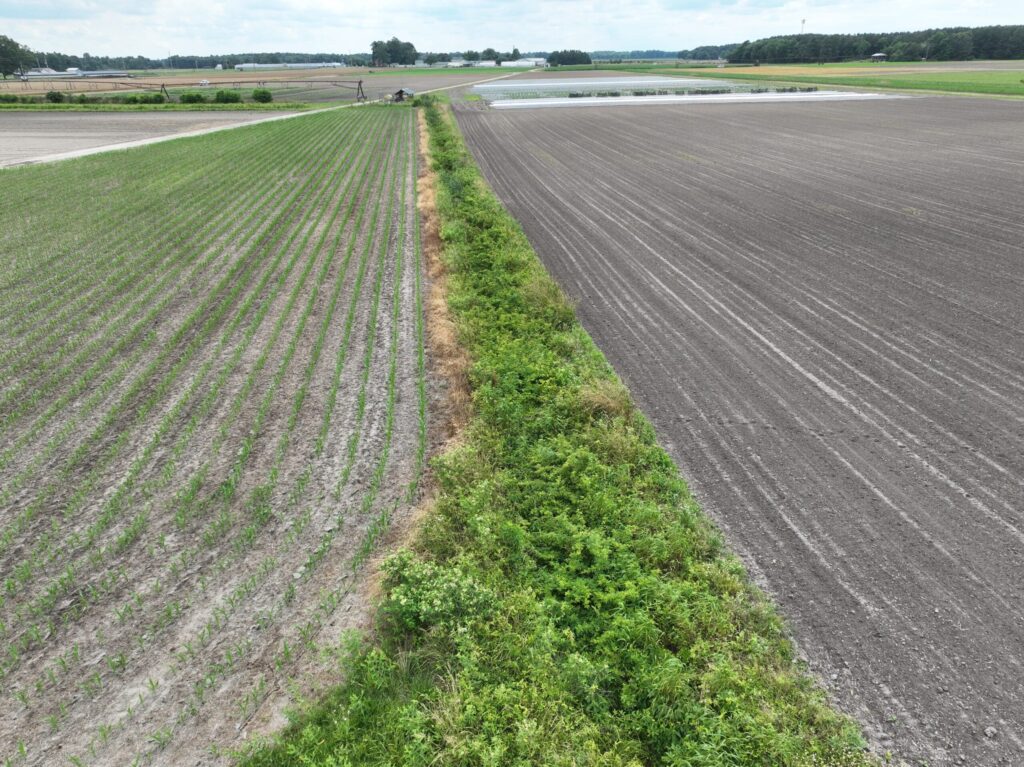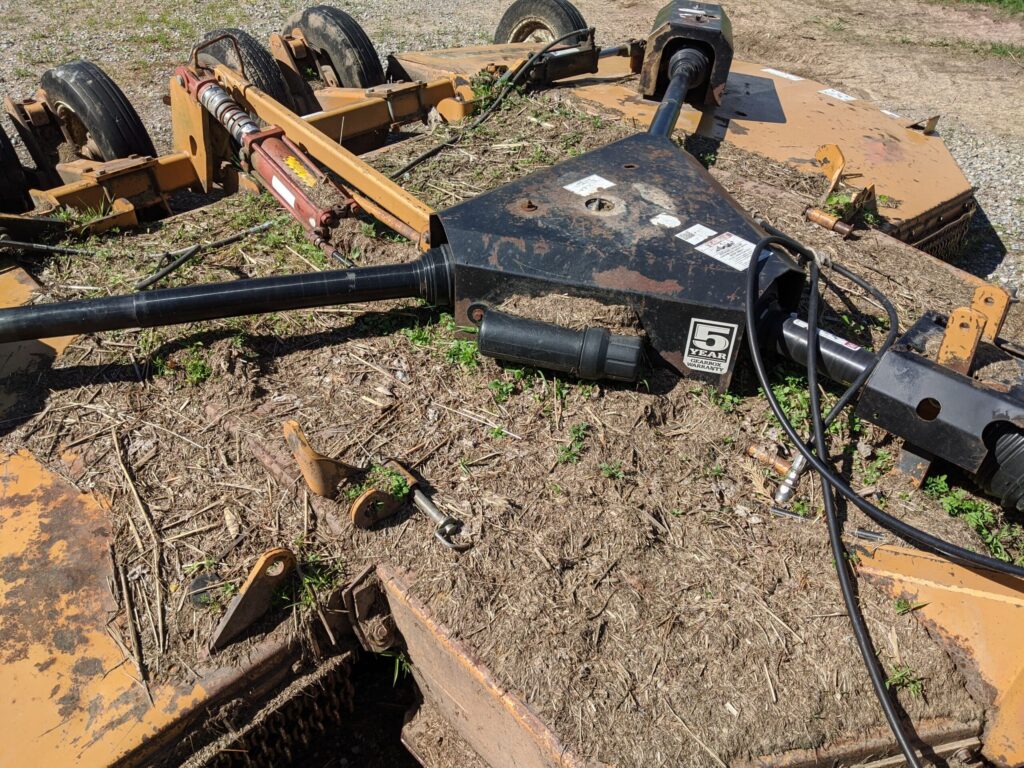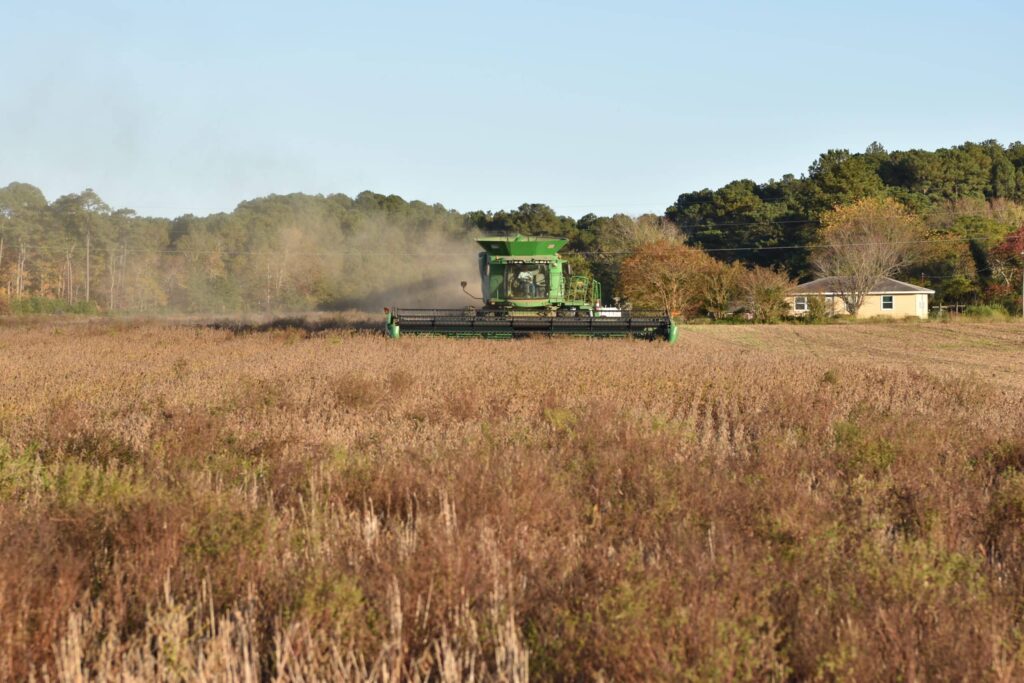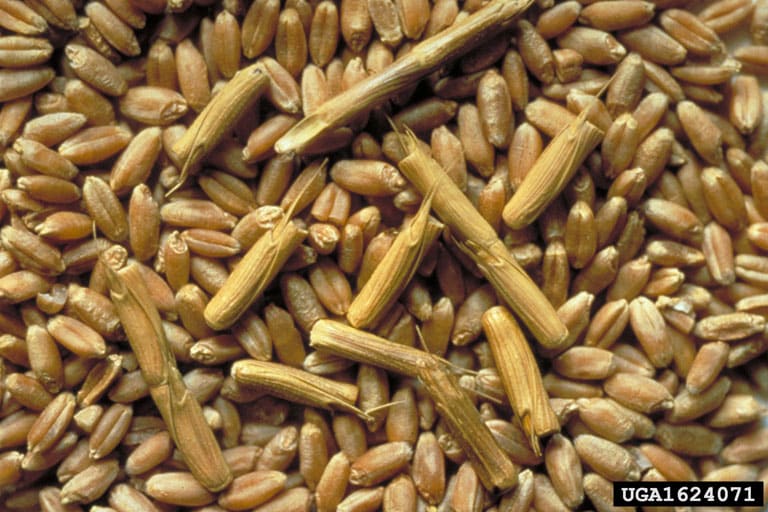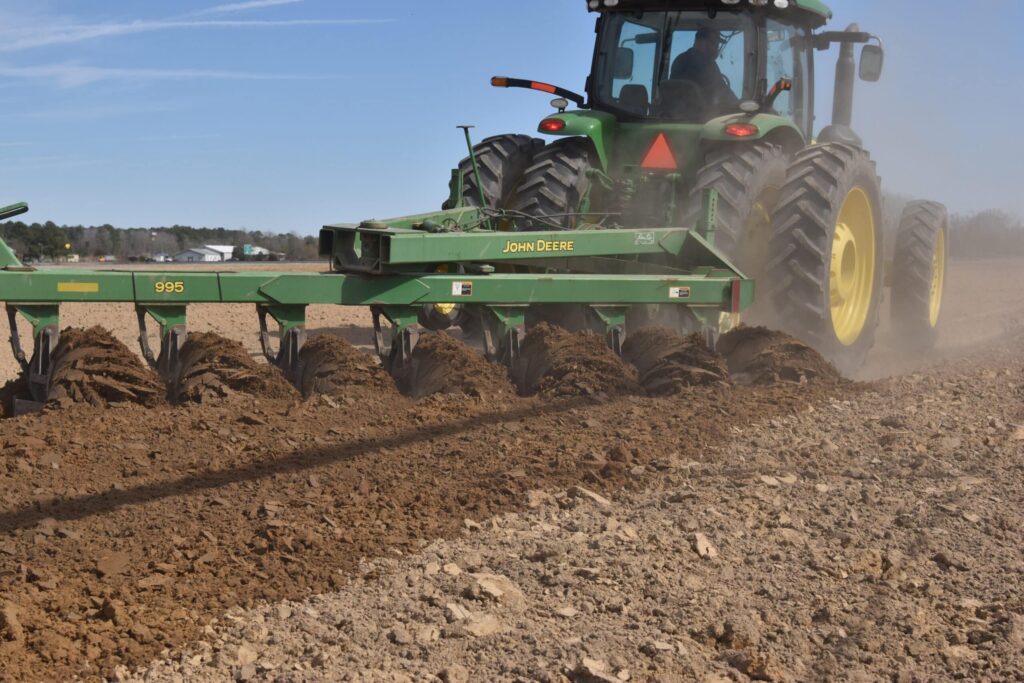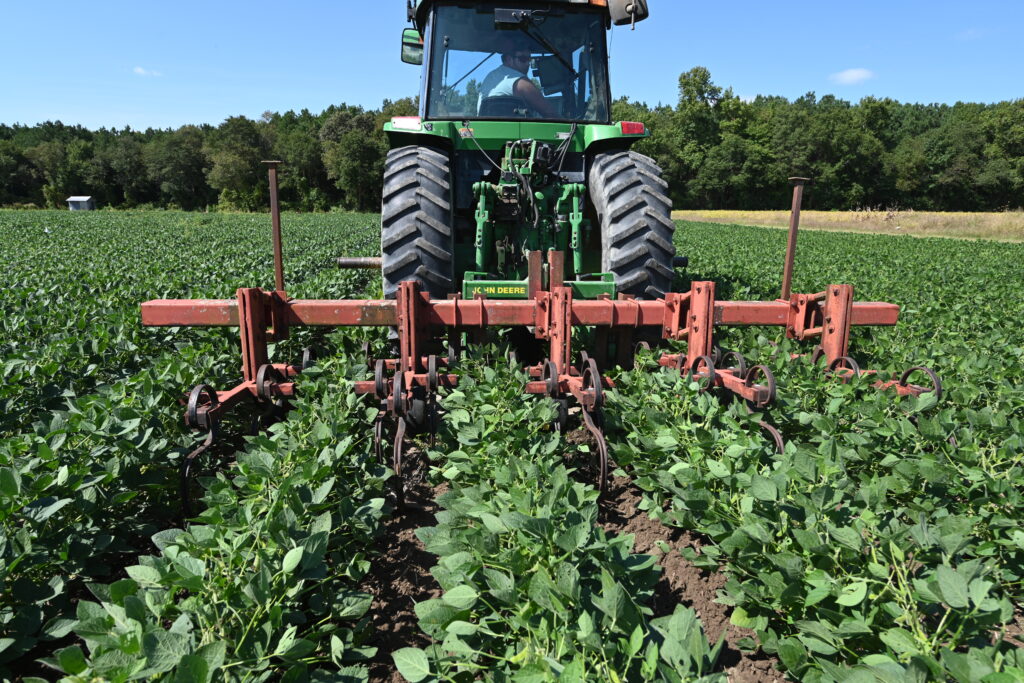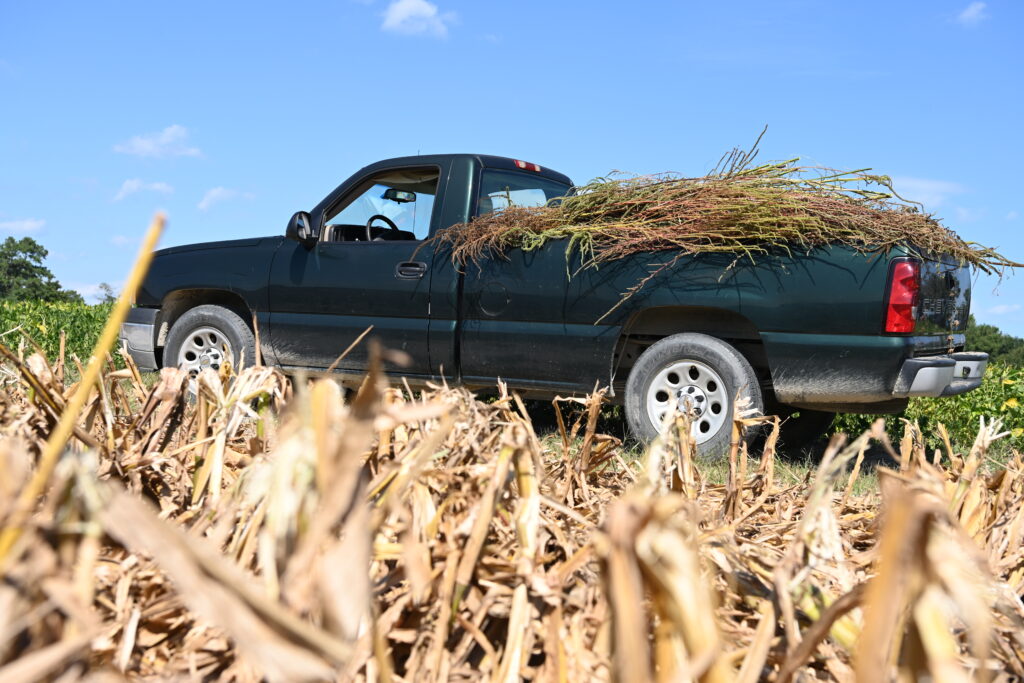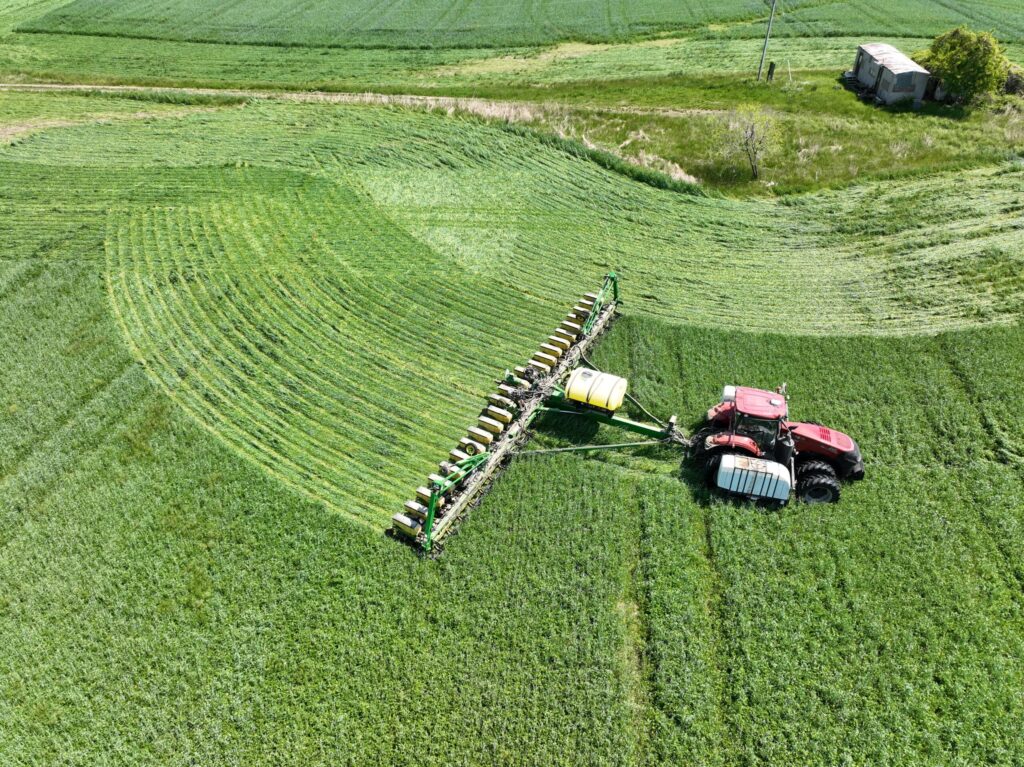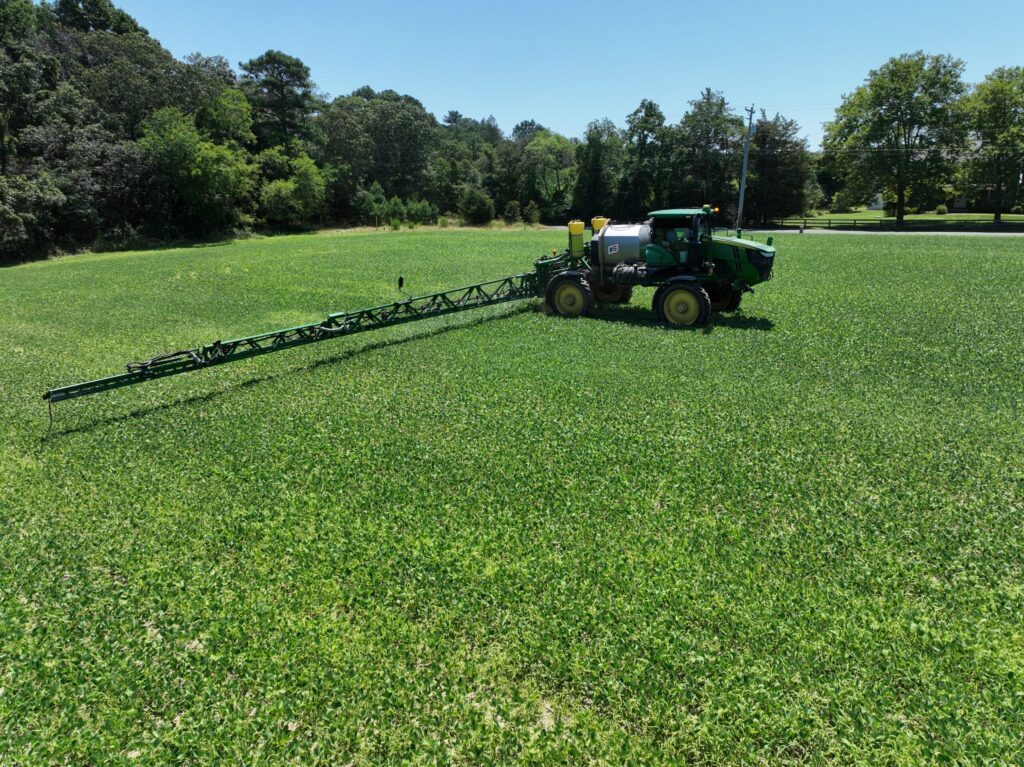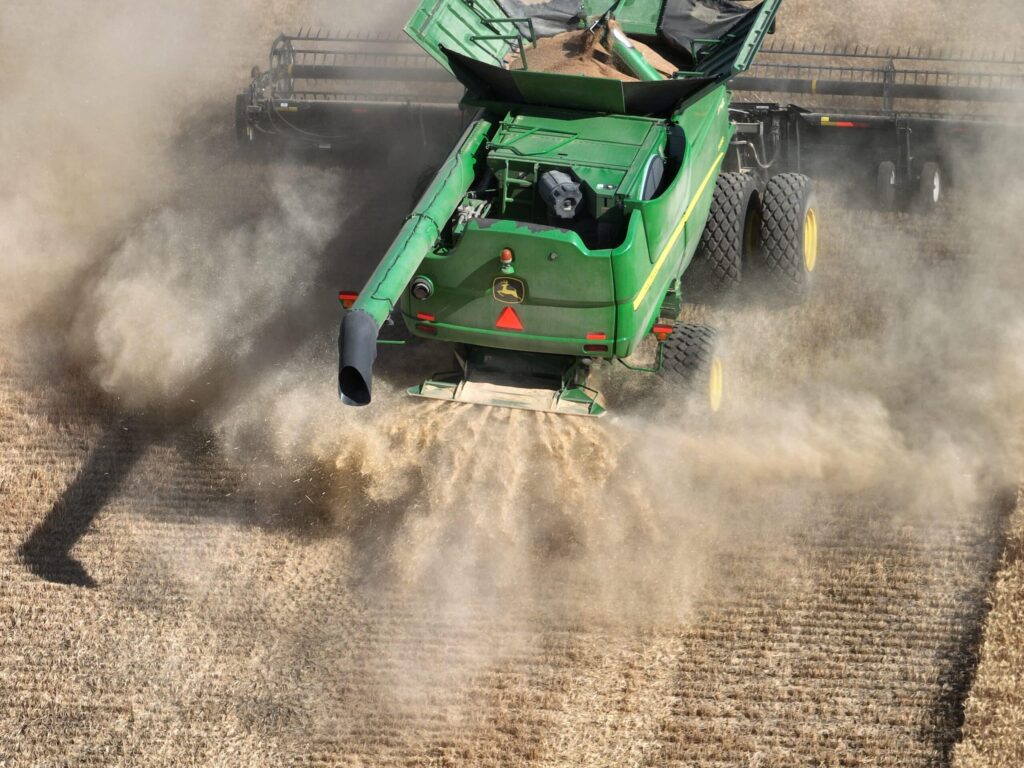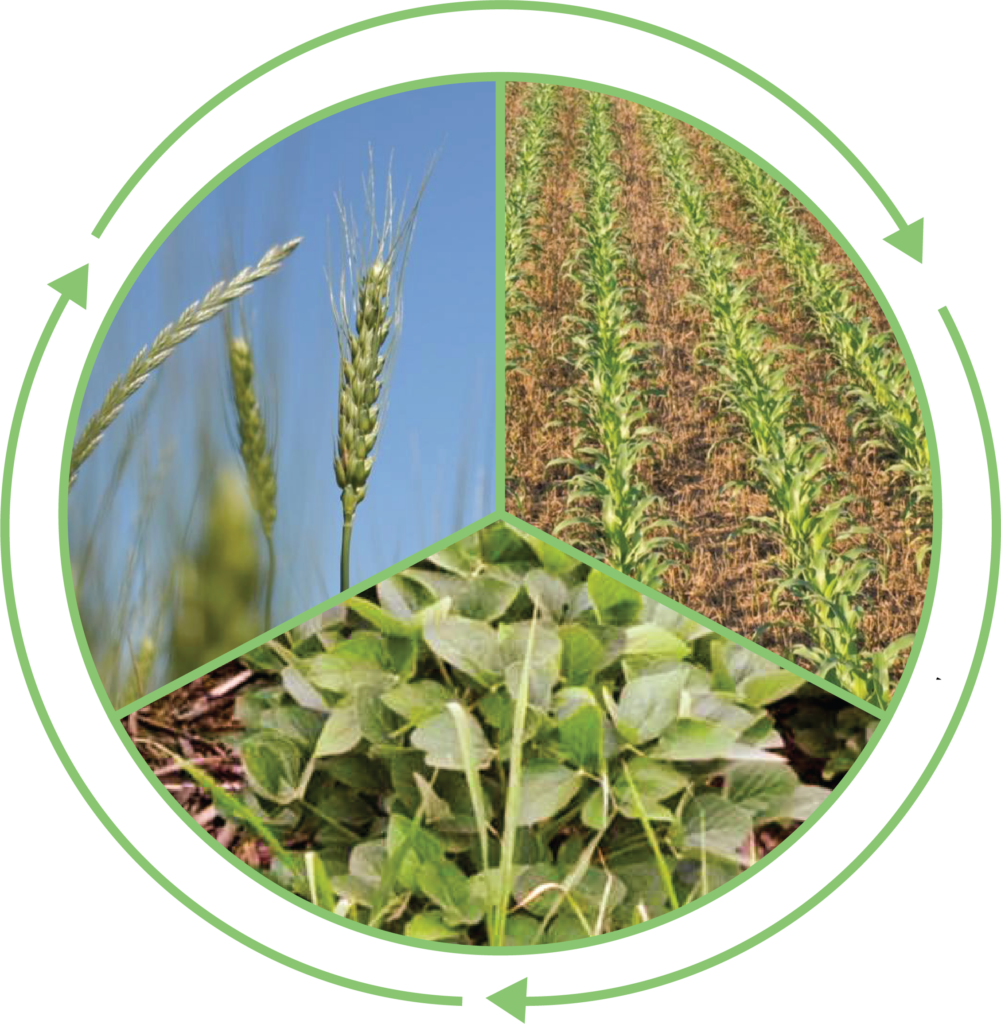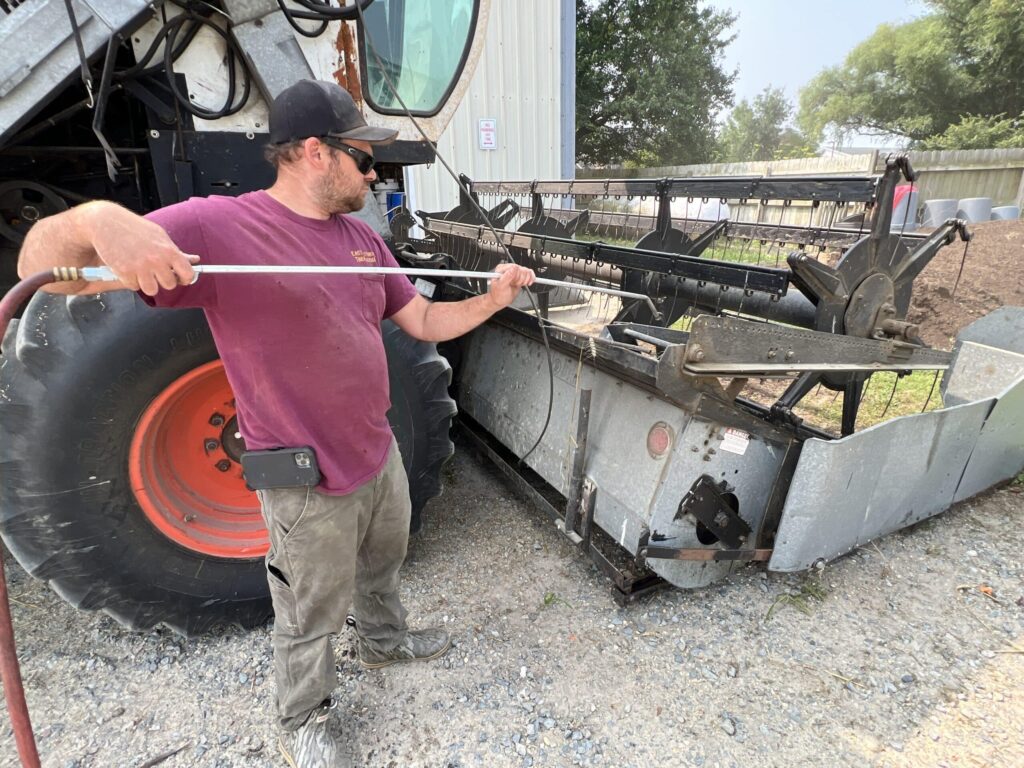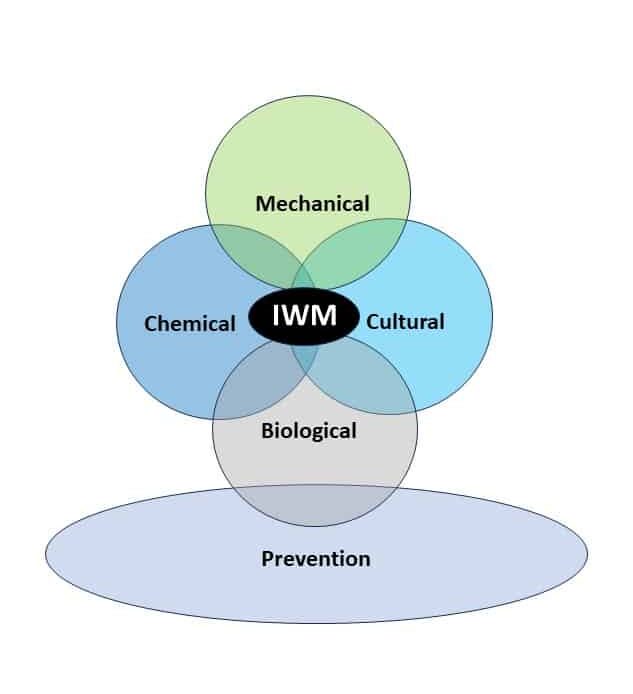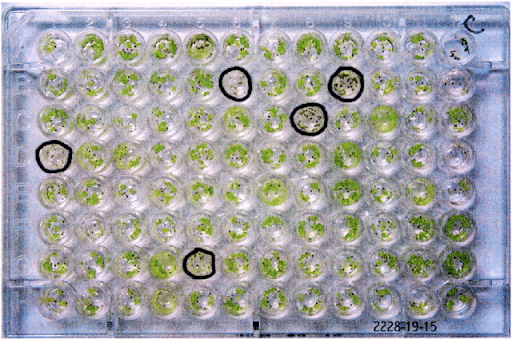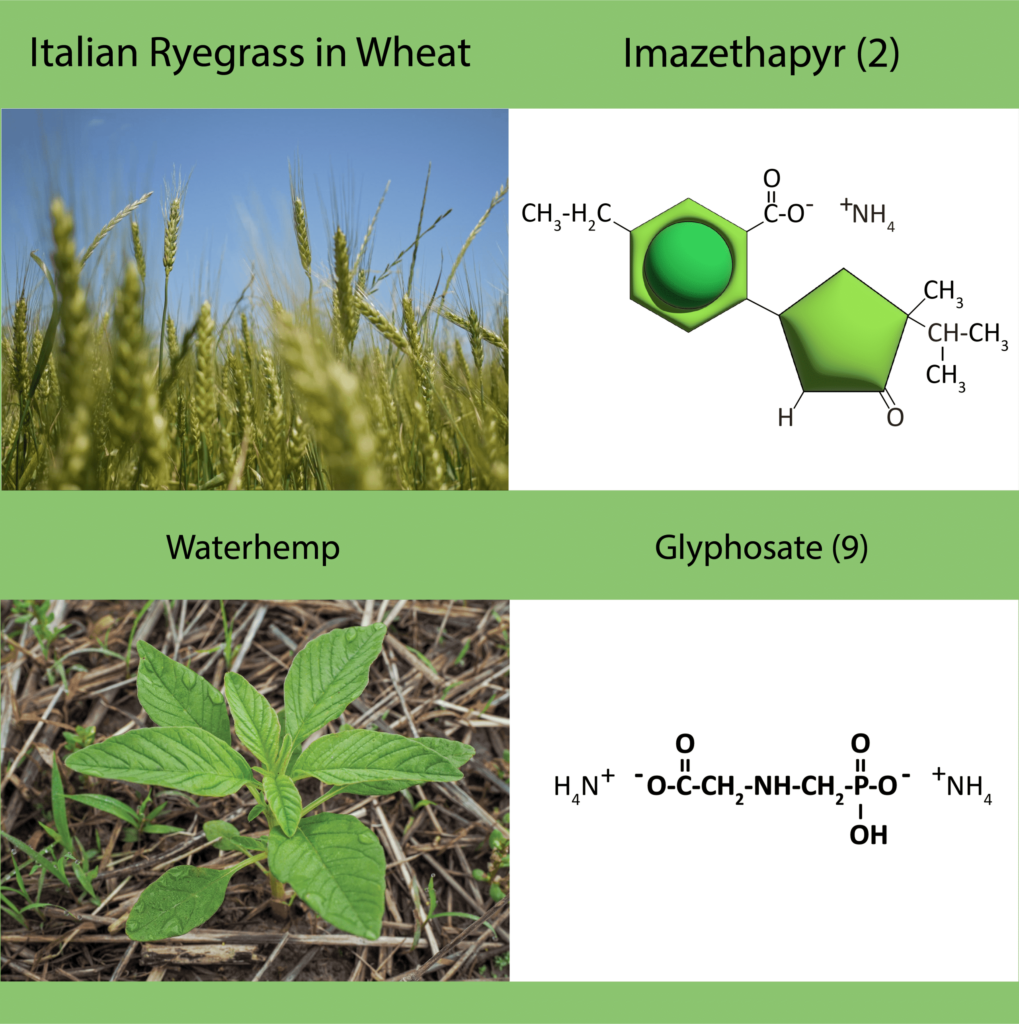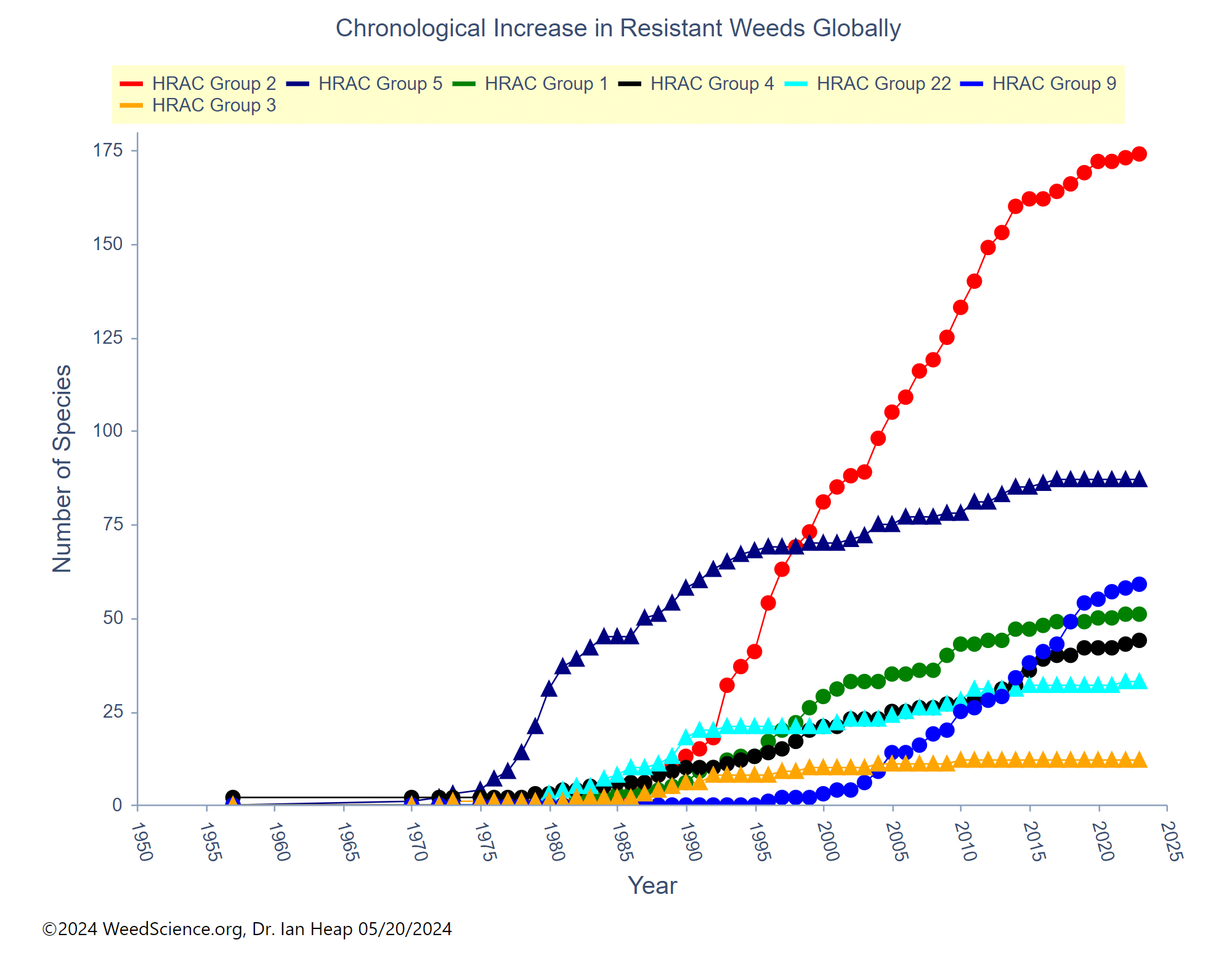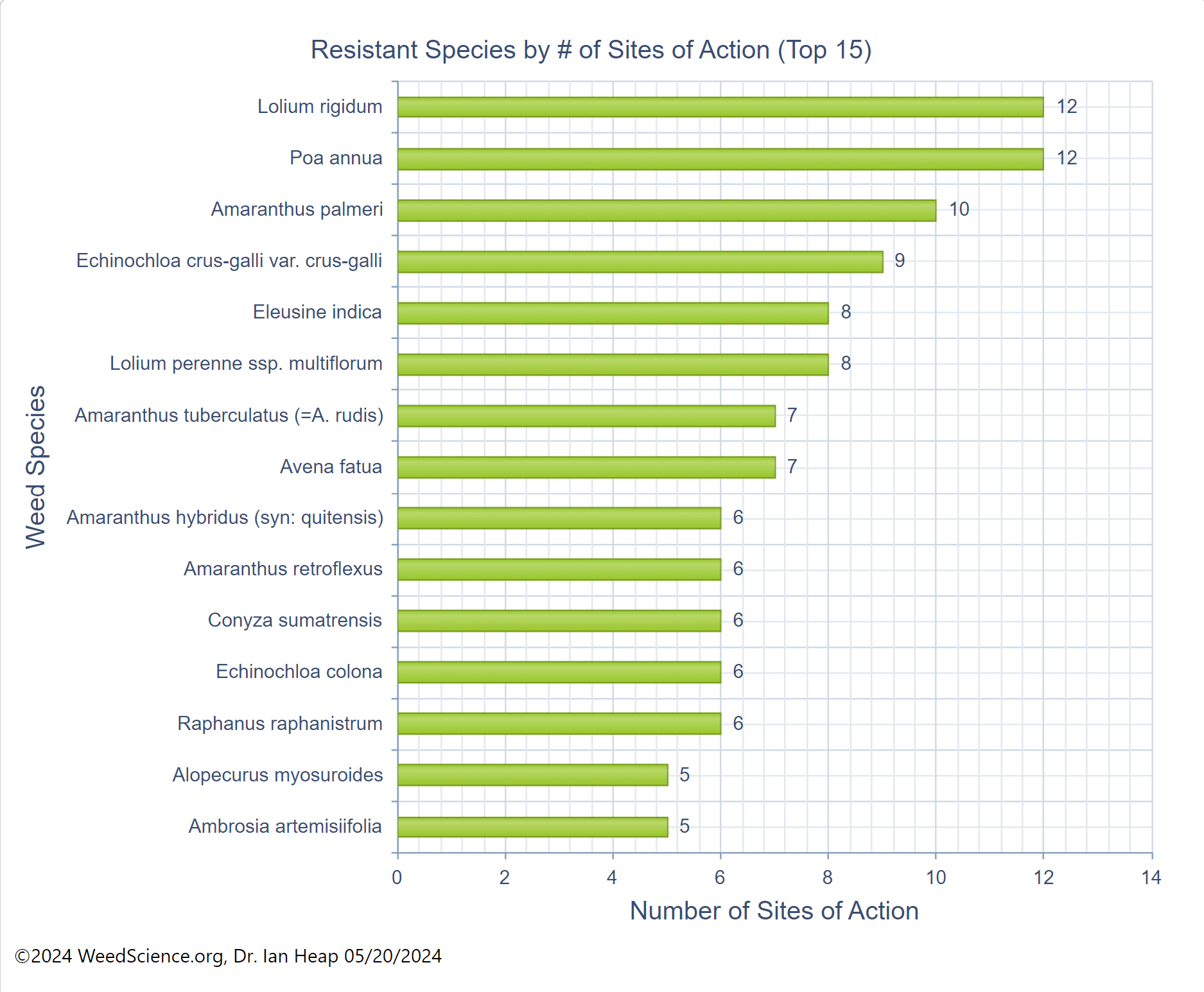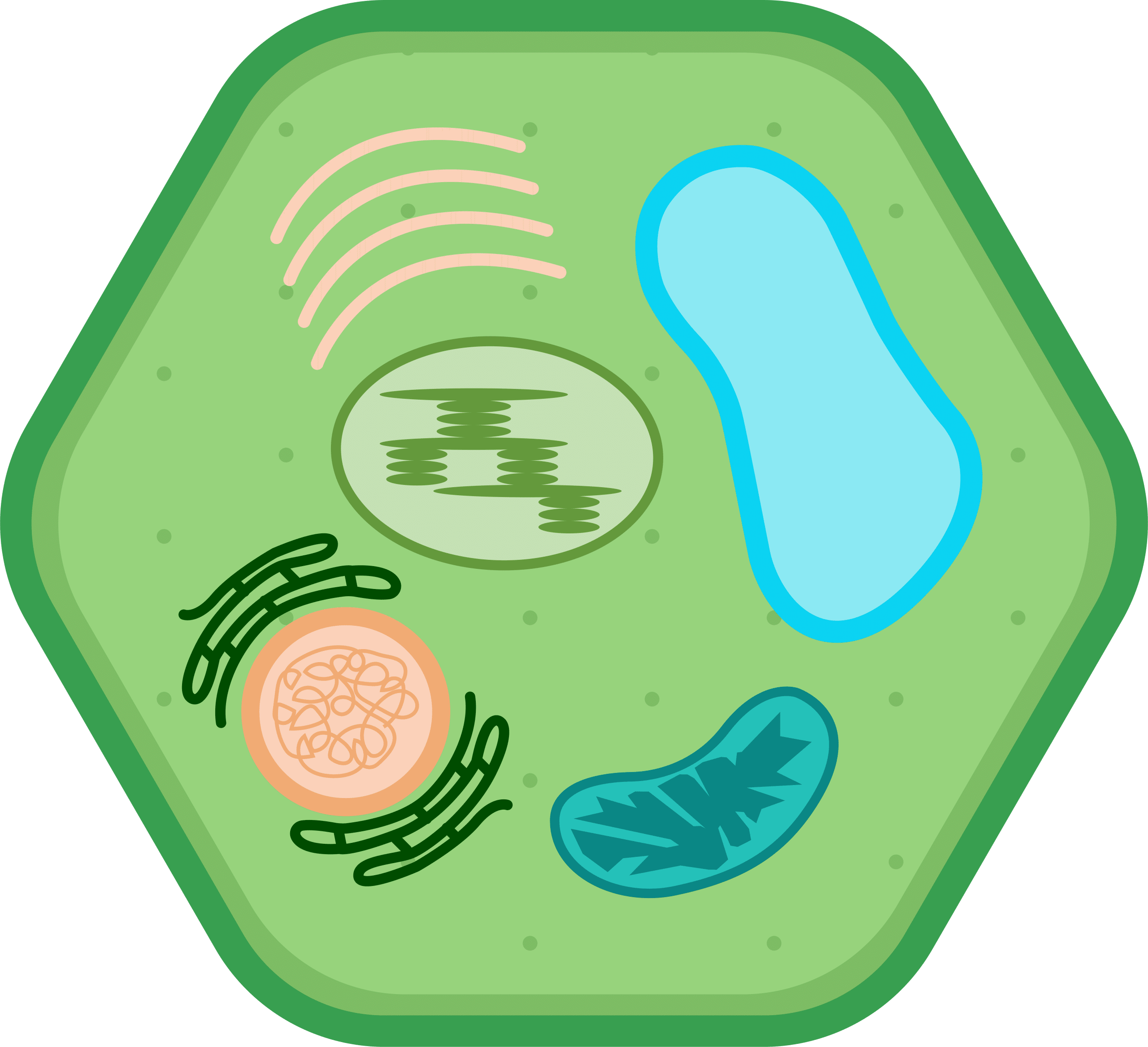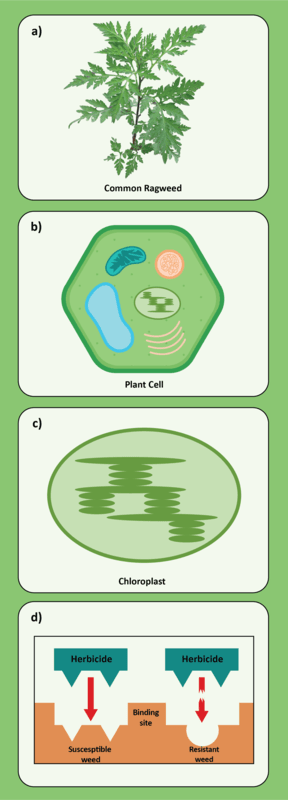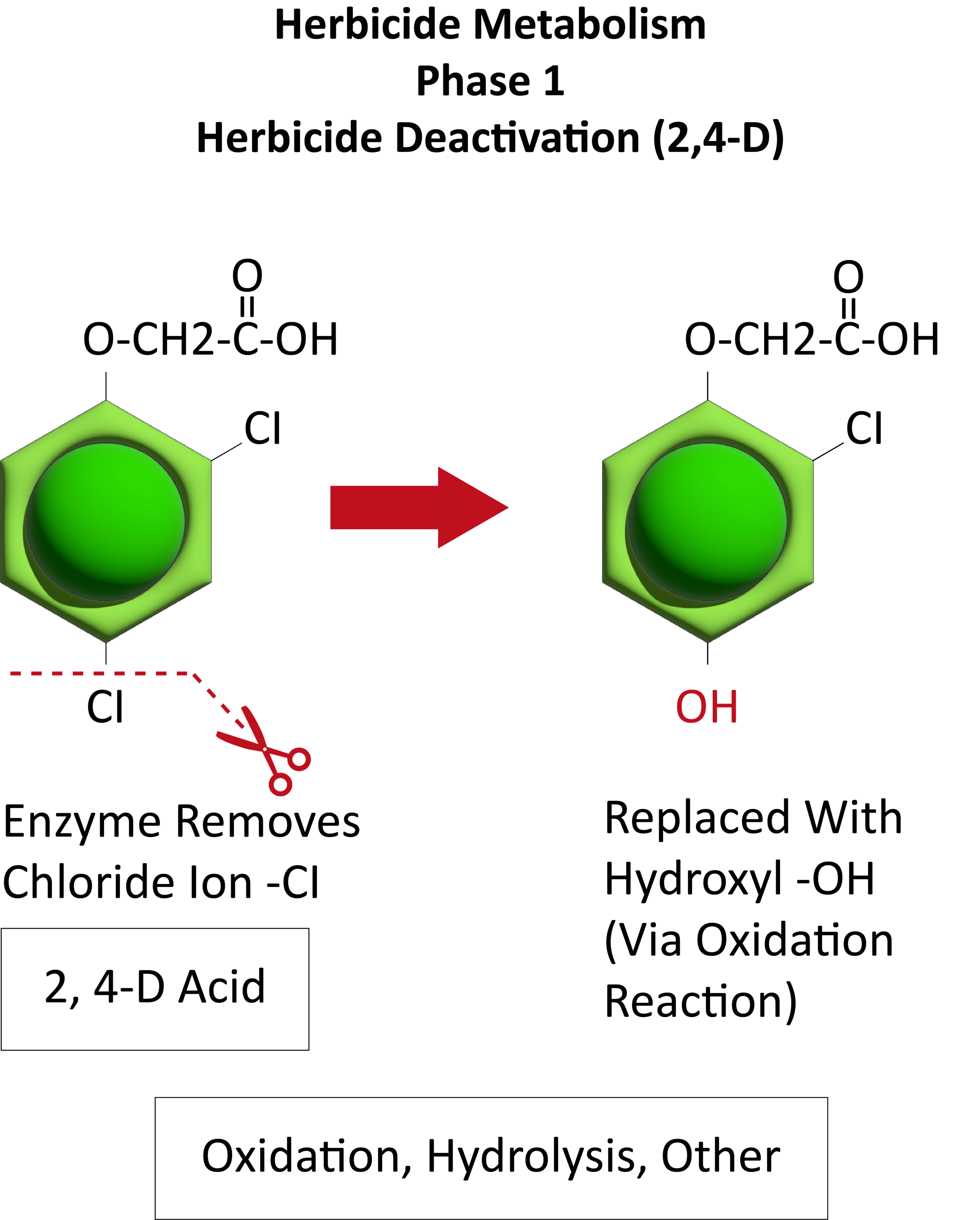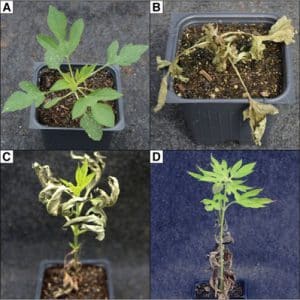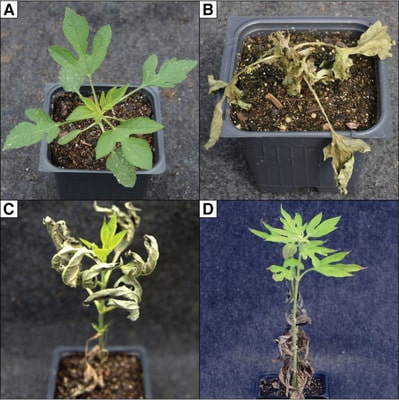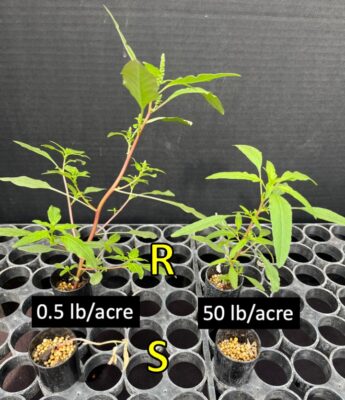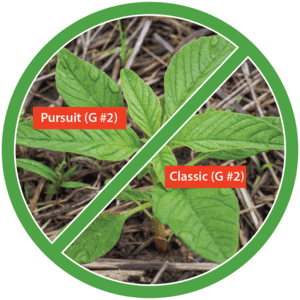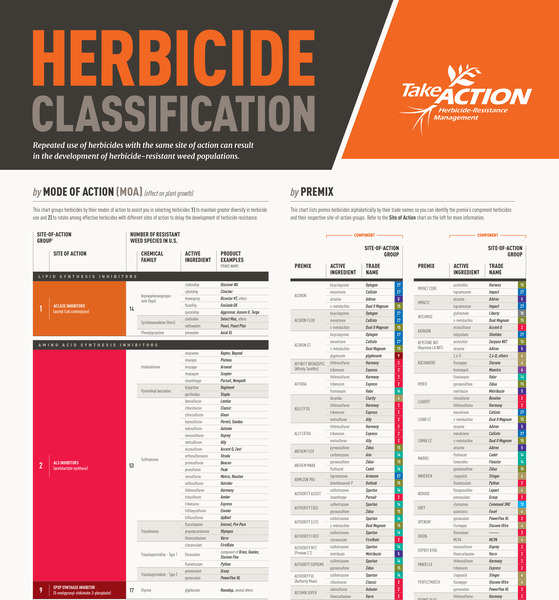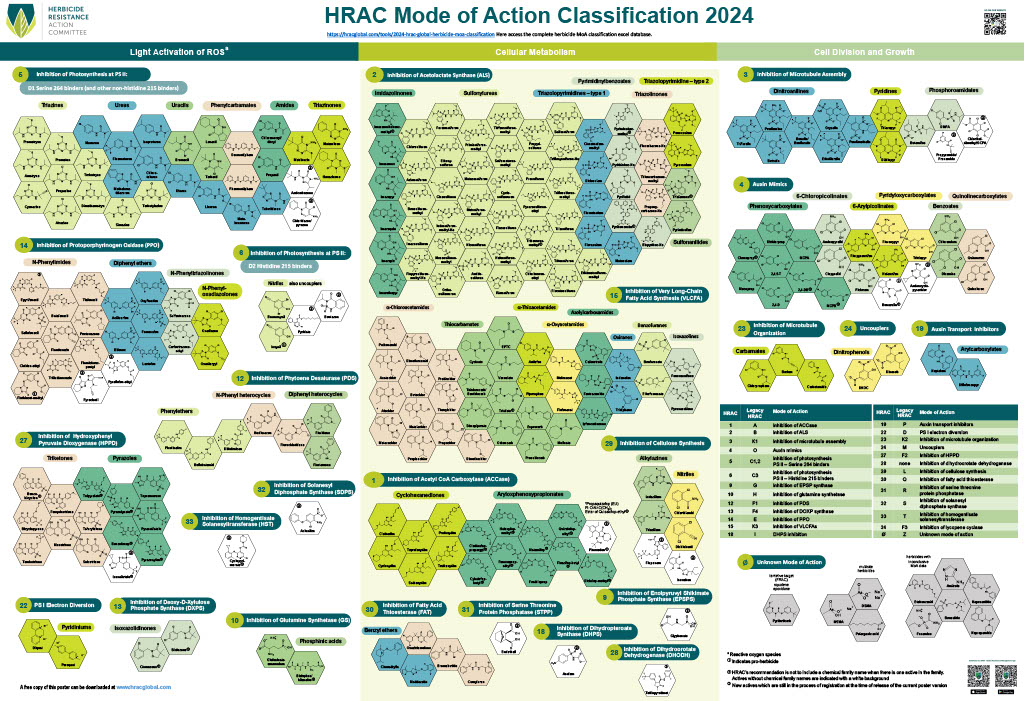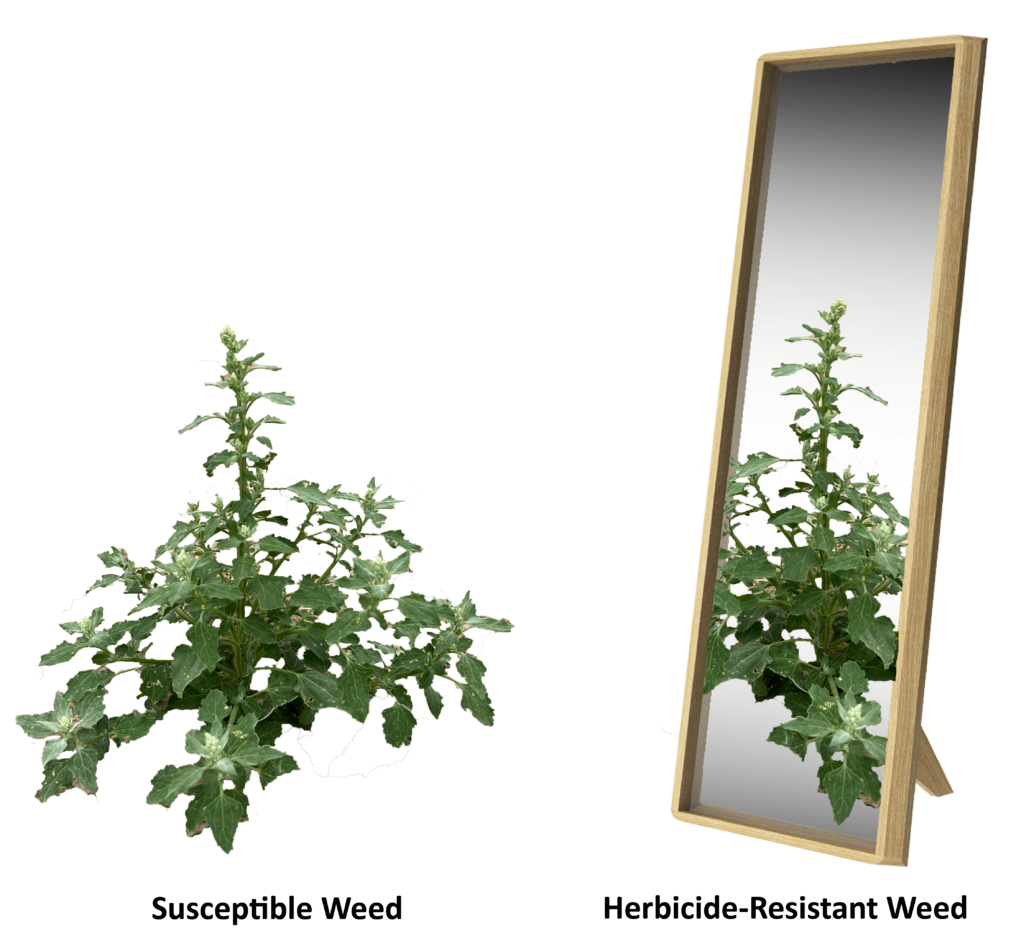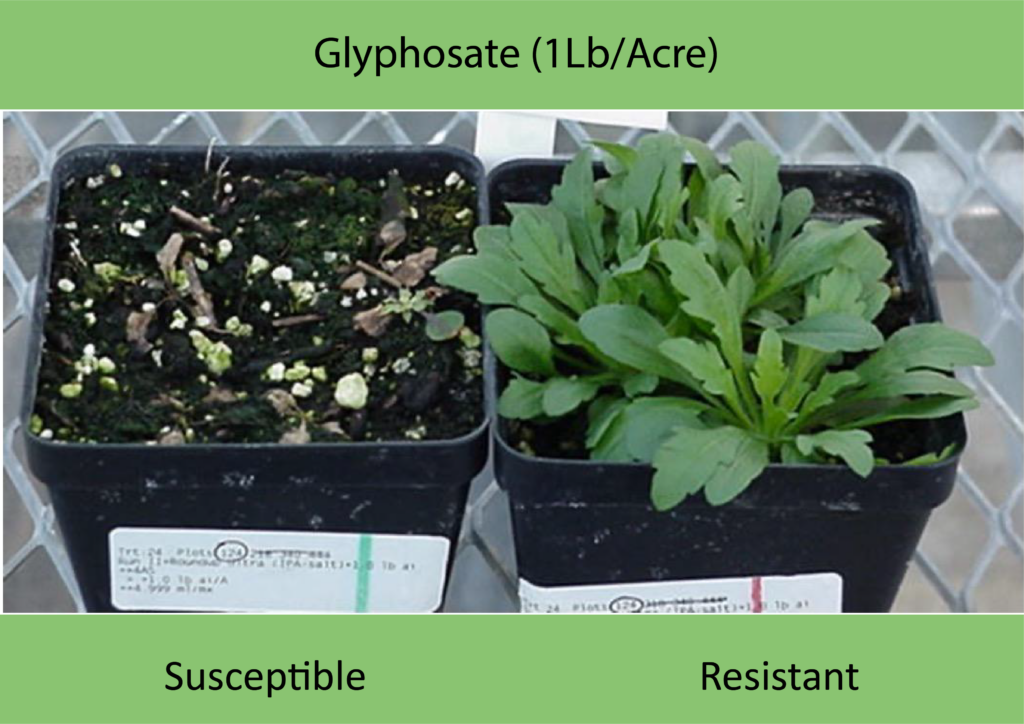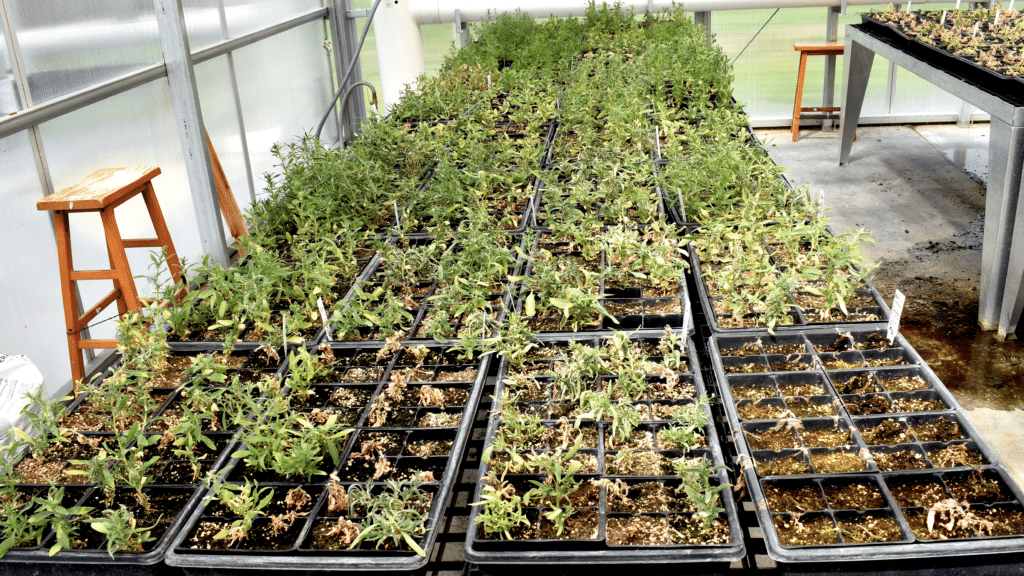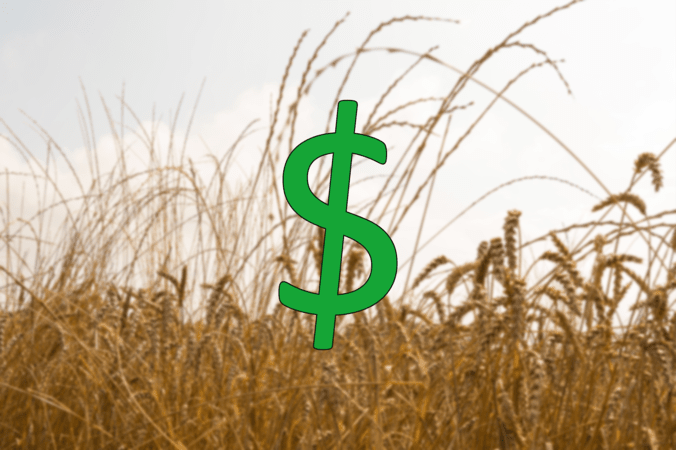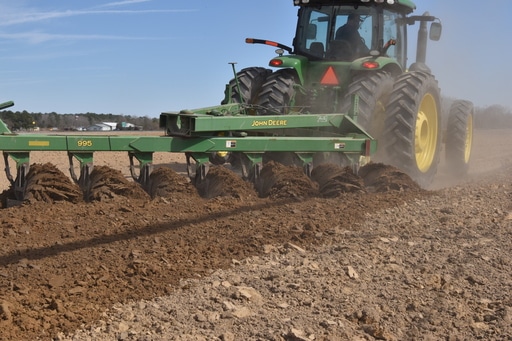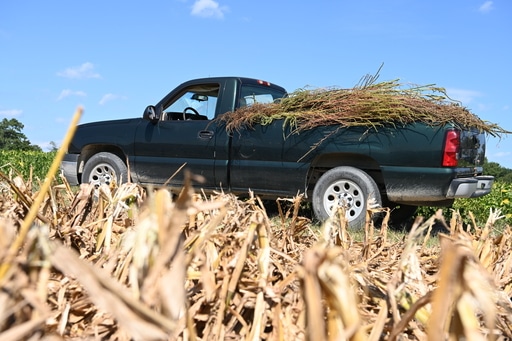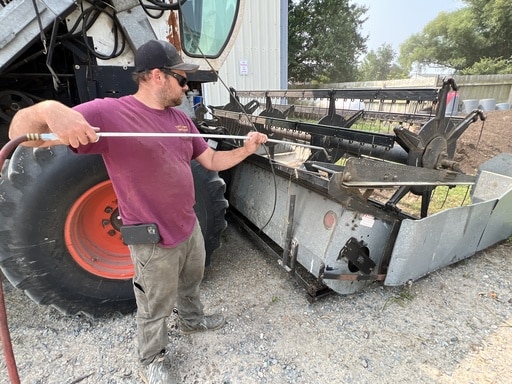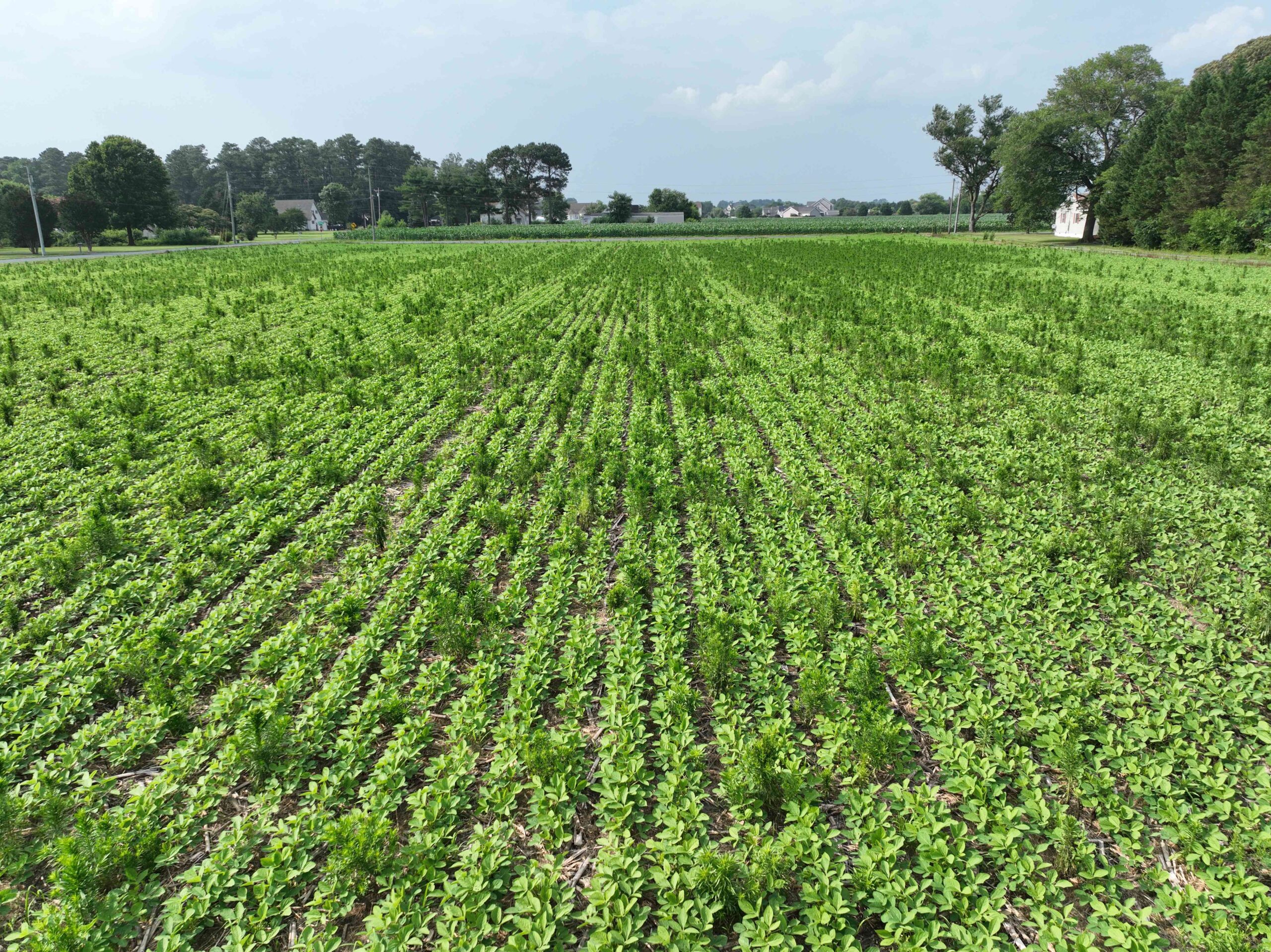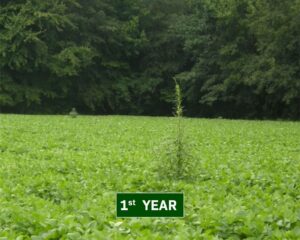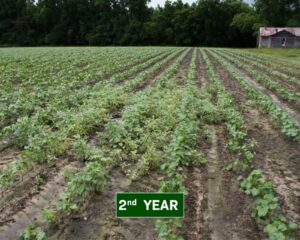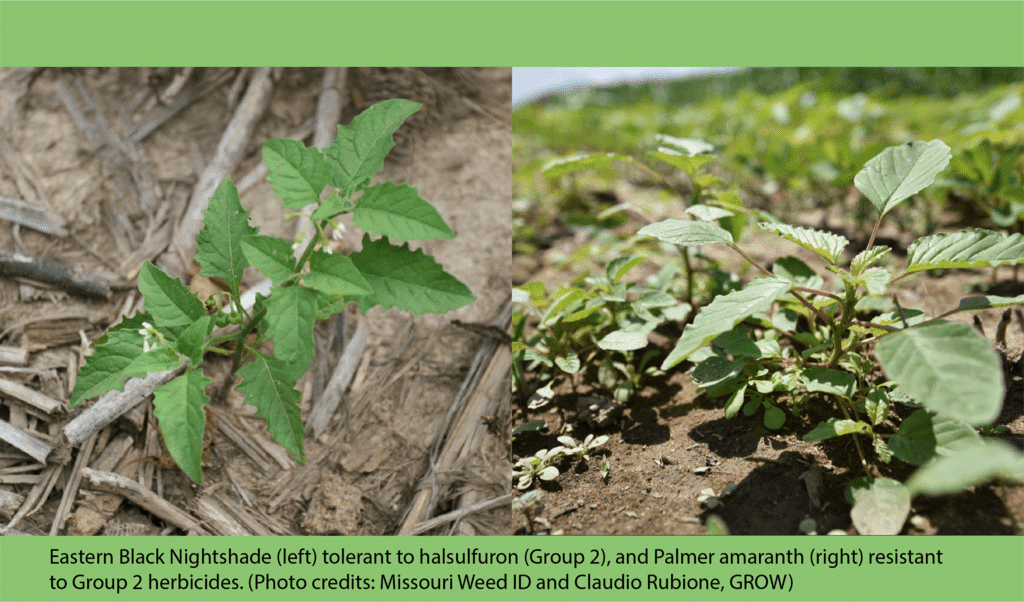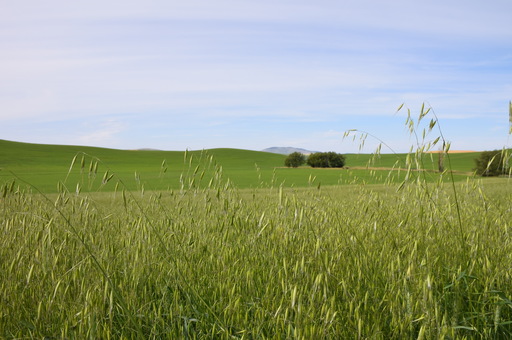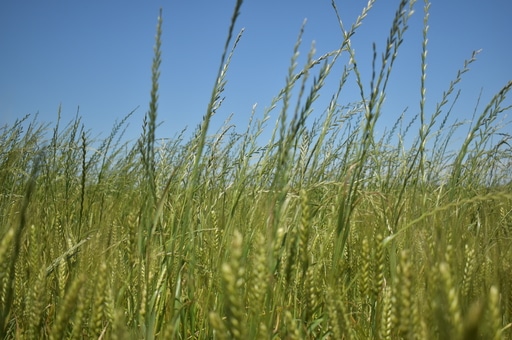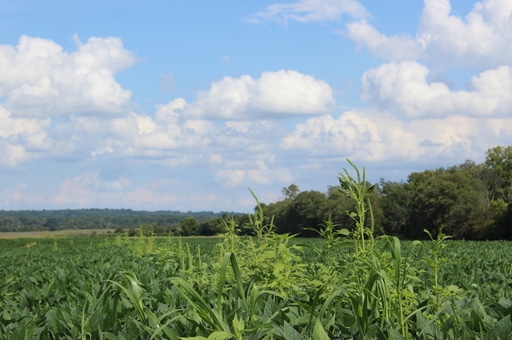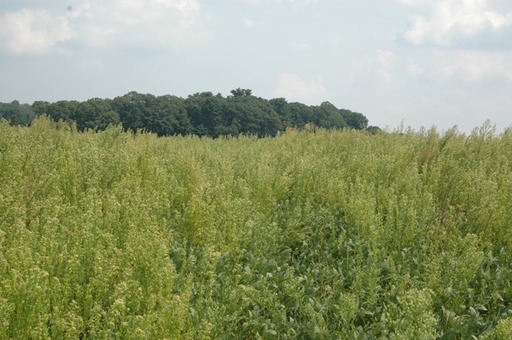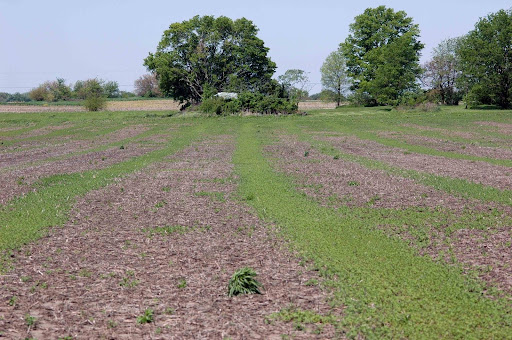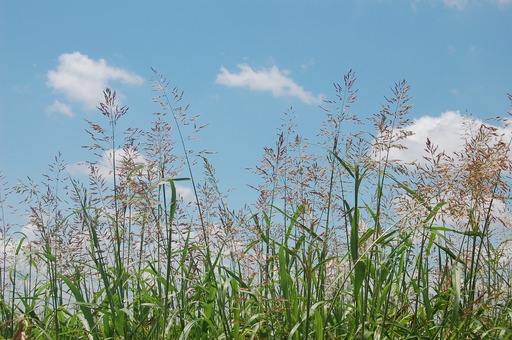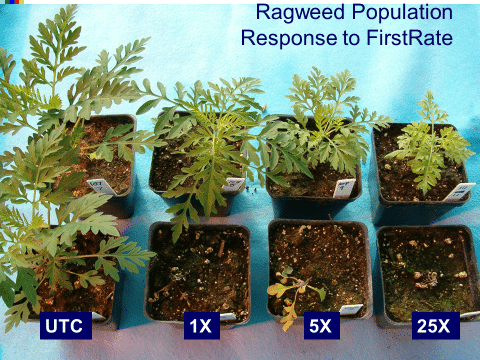Datura stramonium L.
Also known as: Datura tatula, Jamestown-weed, thorn-apple, mad-apple, stinkwort
Jimsonweed is a summer annual that emerges in mid-spring through early summer, flowers five to nine weeks after emergence, sets seed in late summer or fall, and dies with the first killing frost. The plant produces trumpet-like white or purple flowers that have an unpleasant odor that develop into distinct, spiny, egg-shaped fruit capsules towards the end of the season. It is a weed in agronomic cropping systems throughout the United States, but less so in the Northwestern and North Central states. All parts of this weed are toxic to humans and livestock, even when dried. Yield losses due to competition between crops and jimsonweed have been reported to be up to 56% in cotton, 16% in soybean, 56% in corn, and 26-71% in tomatoes.
Identifying Features
As a seedling, the cotyledons are thick, hairless, long, and linear (2 inches long and a quarter inch wide). At maturity, plant height ranges from 1 to 6 feet tall. The plant has erect, branching stems that can regenerate from buds near the base of the stem. Large leaves (3 to 8 inches long, 6 inches wide) are alternately arranged along the stem. Leaves are coarse and unevenly toothed, resembling an oak leaf. Flowers are large (2 to 5 inches long), white or purple, and trumpet-shaped. Seeds develop inside egg-shaped capsules (1 to 2 inches long) with spines.
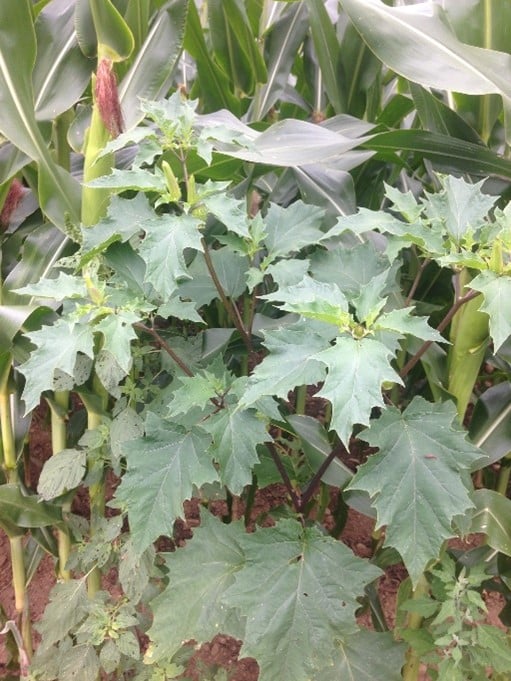
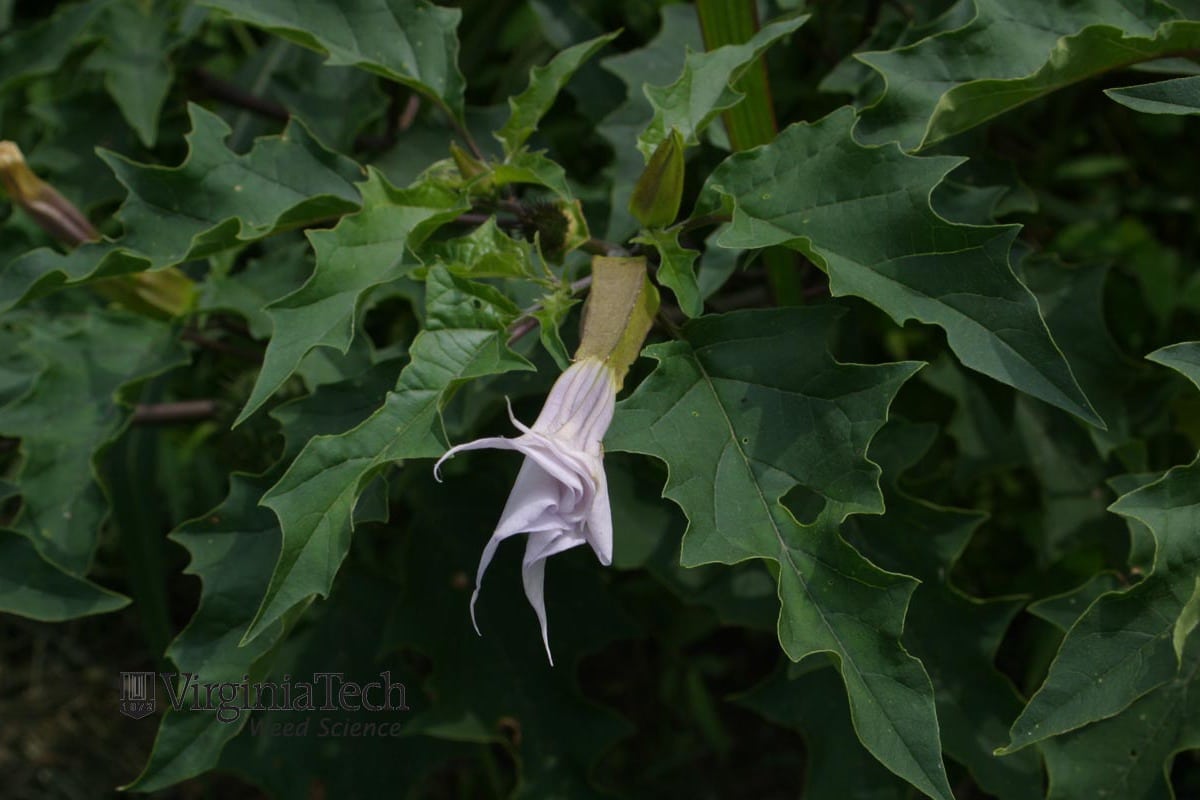
Seed Production
Depending on the growing conditions, jimsonweed can produce anywhere from 1,300 seeds under high stress situations to 30,000 seeds with good growing conditions. Jimsonweed seeds can persist in the soil for many years; some studies indicate seeds remain viable between three and 17 years, while others suggest seeds can remain viable at deep soil depths (22 inches) for more than 39 years. Each capsule contains between 600 and 700 seeds. Jimsonweed will produce capsules throughout the season until it experiences a killing frost. Frost will stop seed maturation in immature capsules. Preventing seed rain during the growing season by mechanical means once jimsonweed produces capsules is difficult since seeds continue to mature on cut branches or uprooted plants.

Seeds can be spread via combines, farm machinery, clothing, livestock, streams, irrigation ditches, and contaminated farm seed.
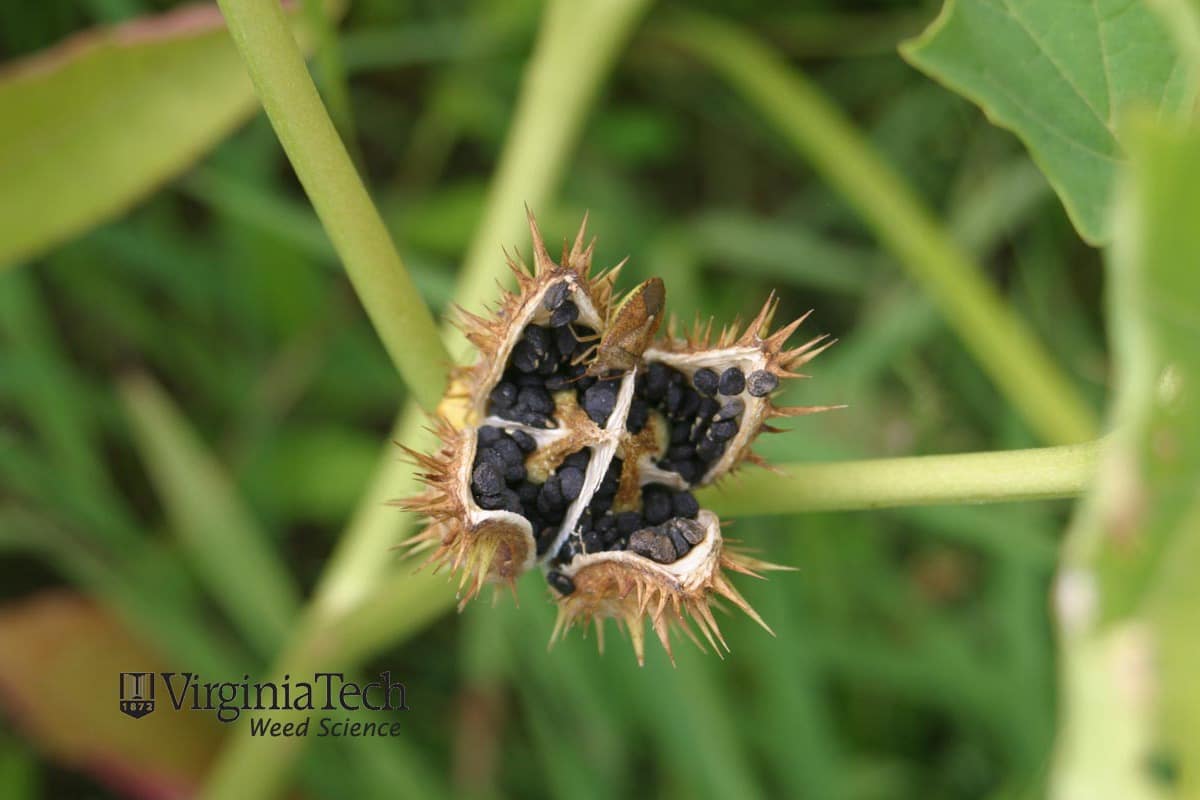
Herbicide Resistance
One case of Group 5 herbicide resistance was identified in jimsonweed in Indiana in 1992, but no new cases of herbicide resistance have been found since then.
Integrated Weed Management Options
Nutrient Management
Jimsonweed is highly responsive to soil nutrients and as such it is often found in on-farm sites with an excess of nutrients such as manure and compost storage areas. Overfertilization should be avoided as part of a long-term control strategy for this plant.
Cover Crops
Growing cover crops between cash crops can help manage jimsonweed. Cover crop residues left on the surface after termination can interfere with jimsonweed germination by reducing soil temperature and blocking light from reaching the soil surface. This practice is best combined with no-till management so that cover crop residue remains on the soil surface.
Mechanical Weed Control
No-till is a viable option to reduce jimsonweed emergence since it lowers soil temperatures, limits sunlight, and can promote seed decay. Tillage can inadvertently benefit jimsonweed populations; fall tillage promotes seed survival by burying seeds deeper in the soil profile, and spring tillage promotes germination by bringing seeds close to the surface and exposing them to warm temperatures and greater light conditions. Due to its large taproot and ability to regenerate stems from lower nodes, jimsonweed can be difficult to remove mechanically past the seedling stage. Additionally, jimsonweed emerges well from 0.4 to 2 inches deep in the soil, and some individuals can emerge from 4 inches below the soil surface. Since these emergence depths are below the working depth of tine weeders and rotary hoes, the goal of cultivation should be to bury seedlings rather than uproot them. As a result, hilling crops may be the best option to mechanically control seedlings. Aside from burying seedlings, flaming can be an effective method to control small plants.
Crop Rotation
Similar to the use of cover crops, rotating a field to a crop that provides early spring field coverage like winter grains or perennial forages can reduce jimsonweed germination and disrupt its lifecycle as harvests occur.
Herbicide Control Options
According to the Penn State Agronomy Guide, the following herbicides were rated to provide 85% or more control of jimsonweed (note: the corn and soybean recommendations are cross-referenced & confirmed with the Ohio, Indiana, Illinois, Missouri Weed Control Guide).
Corn
Several herbicide options in corn are labeled for jimsonweed control. Note that some postemergence options are only available for corn genetically modified to tolerate them. Preemergence herbicides for corn include atrazine, Princep, Acuron, Anthem ATZ, Bicep, Cinch ATZ, Harness Xtra, and Lumax. Postemergence herbicide options include atrazine, Basagran, Callisto, Capreno, dicamba, Diflexx, glyphosate, Halex GT, Impact, Laudis, Liberty, Realm Q, Revulin Q, Sinate, Status, and Yukon.
Sorghum
Sorghum has similar, but fewer, herbicide options compared to corn. Preemergence herbicides that can be used in sorghum include atrazine, Bicep, Degree Xtra, Halex GT, Lexar, and Lumax. Postemergence herbicide options include atrazine, Basagran, Clarity, Linex, Maestro, and Yukon.
Soybean
Like corn, some postemergence options are only available for genetically modified soybeans. Preemergence options include Authority MTZ, Canopy DF, Envive, Fierce XLT, Trivence, and Valor XLT. Postemergence options include Basagran, Classic, Cobra, glyphosate, Liberty, Ultra Blazer, Extreme, Flexstar GT, Storm, and Synchrony.
Grass Forages
Herbicide options from the Penn State Agronomy Guide were only rated for grass forage systems. These products differ by application timing, the age of the forage stand, and application method. For established grass forages, herbicide options include 2,4-D, Aim, Chaparral, Crossbow, dicamba, DuraCor, GrazonNext HL, metsulfuron, and Milestone. Less herbicide options exist for seedling-stage grass forages including Aim, dicamba, and DuraCor. Spot treatments include Chaparral, Crossbow, dicamba, DuraCor, glyphosate, GrazonNext HL, metsulfuron, and Milestone.
Resources:
More information on this weed and its management can be found in the following resources:
Sustainable Agriculture Research and Extension (SARE) article
Michigan State Extension article
Penn State Extension Agronomy Guide
Ohio, Indiana, Illinois, and Missouri Weed Control Guide
Datura stramonium (jimsonweed) | CABI Compendium
Citations:
University of Missouri; Jimsonweed // Mizzou WeedID
Michigan State University Extension; Jimsonweed – Weeds
Cornell CALS; Jimsonweed | CALS
Weeds of the Northeast
International Herbicide-Resistant Weed Database; HRAC Group 5> (Legacy C1 C2) resistant Datura stramonium from United States, Indiana
Penn State Extension Agronomy Guide, 2021-2022
Ohio, Indiana, Illinois, and Missouri Weed Control Guide, 2023
Rojas-Sandoval, J. (2023). Datura stramonium (jimsonweed). CABI Compendium. doi:10.1079/cabicompendium.18006. Retrieved from: https://www.cabidigitallibrary.org/doi/10.1079/cabicompendium.18006#sec-28
Author:
Grant Hoffer, Penn State University
Editors:
John Wallace, Penn State University
Emily Unglesbee, Virginia Tech
Michael Flessner, Virginia Tech
Mark VanGessel, University of Delaware
